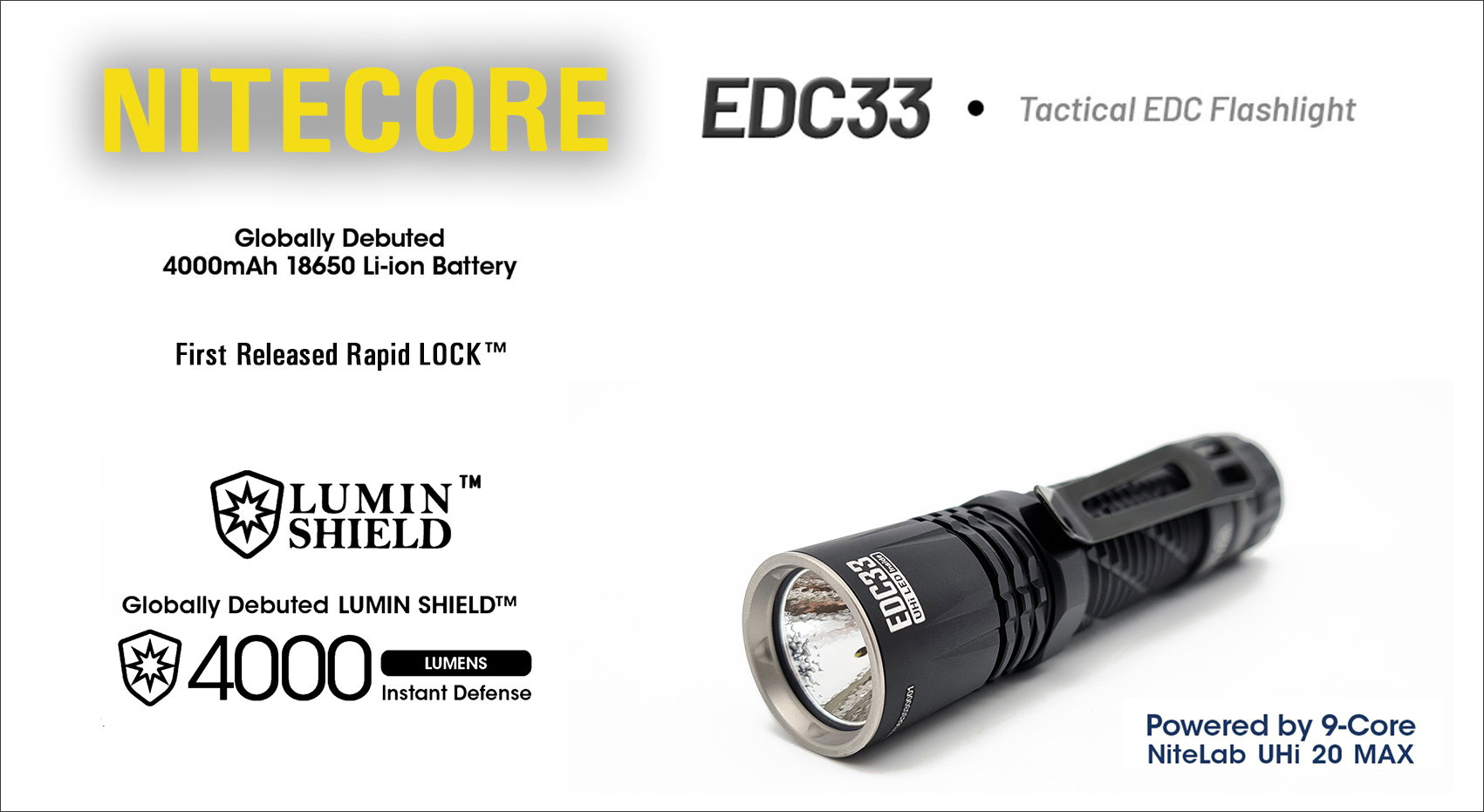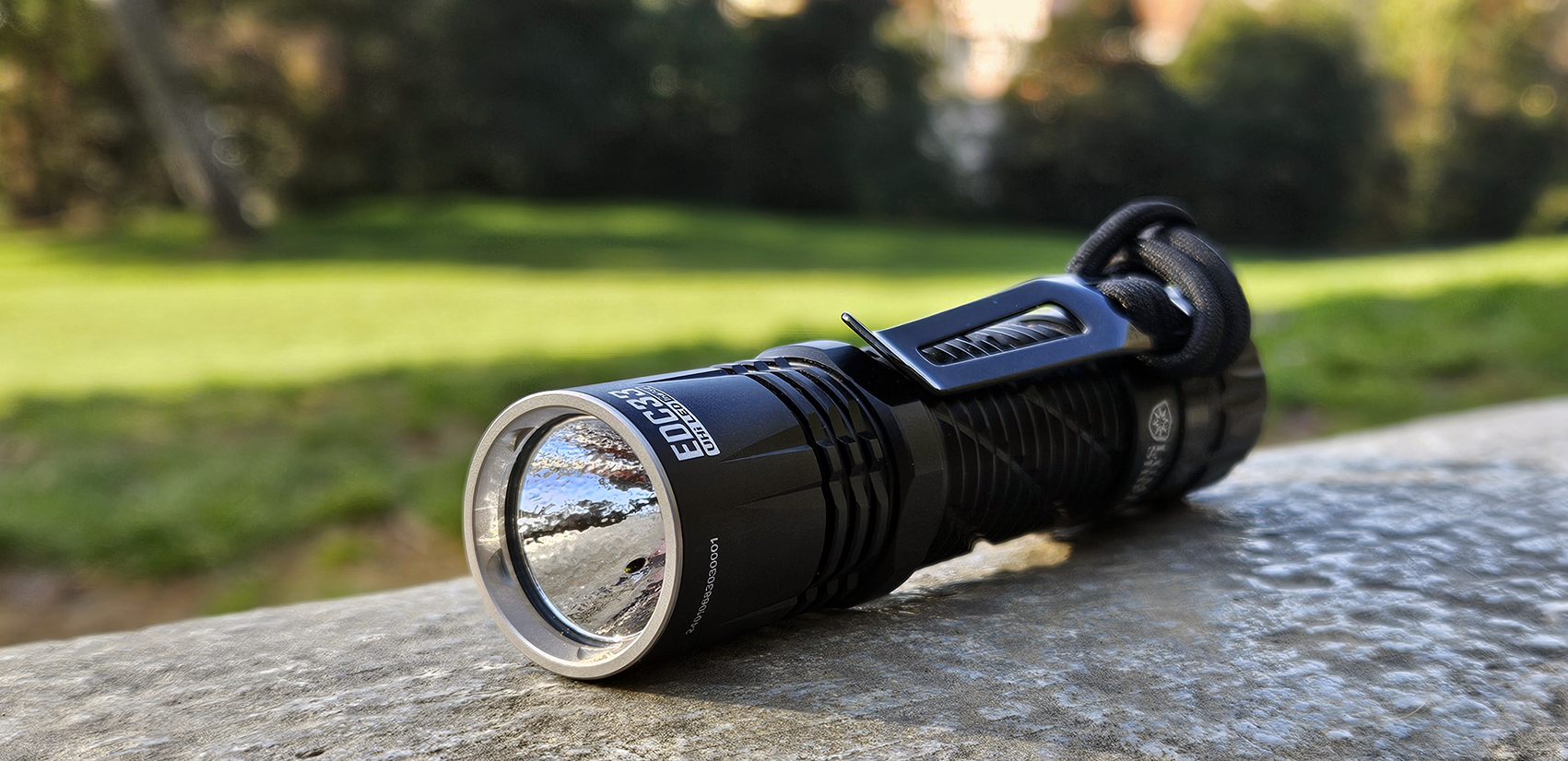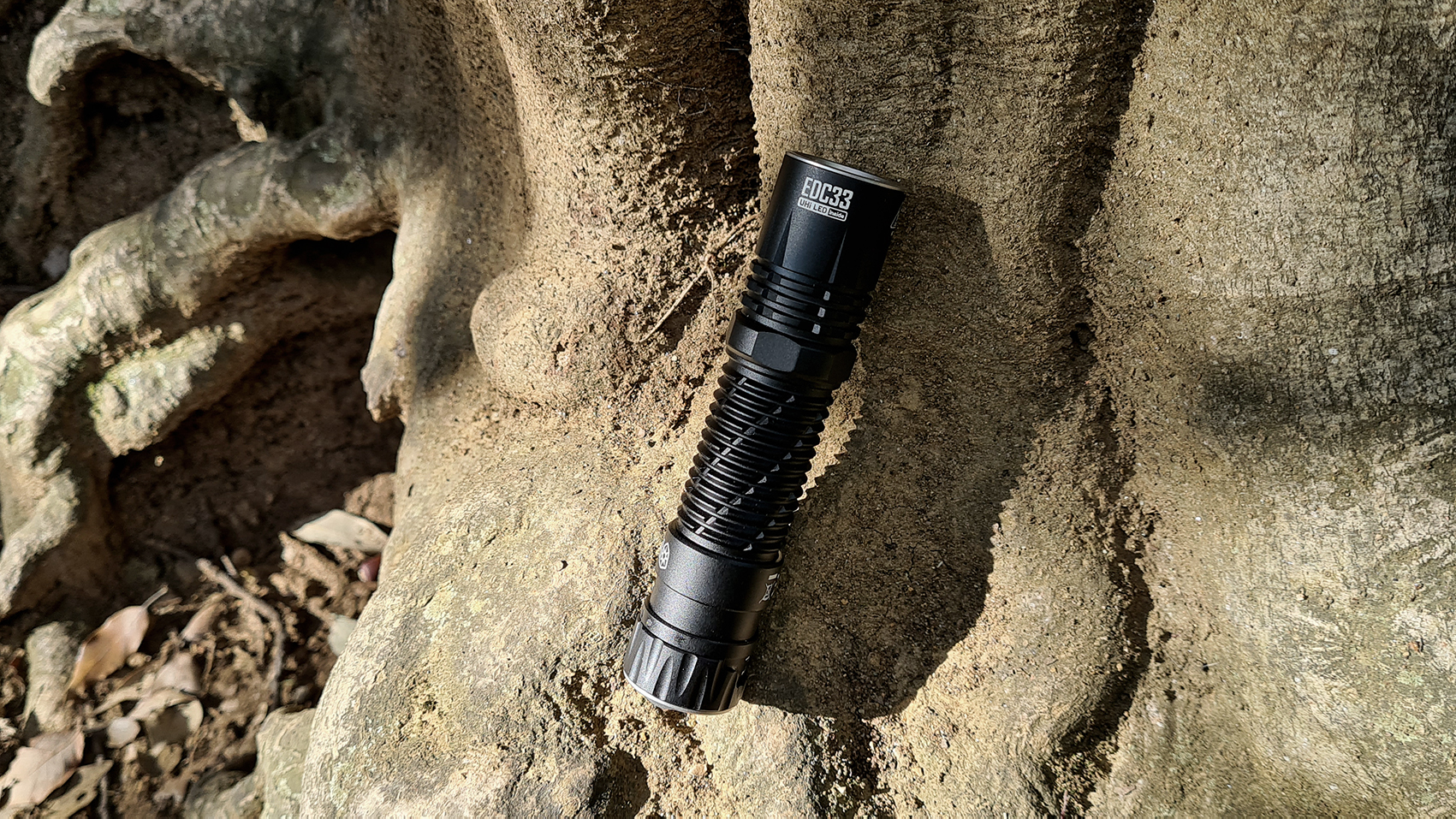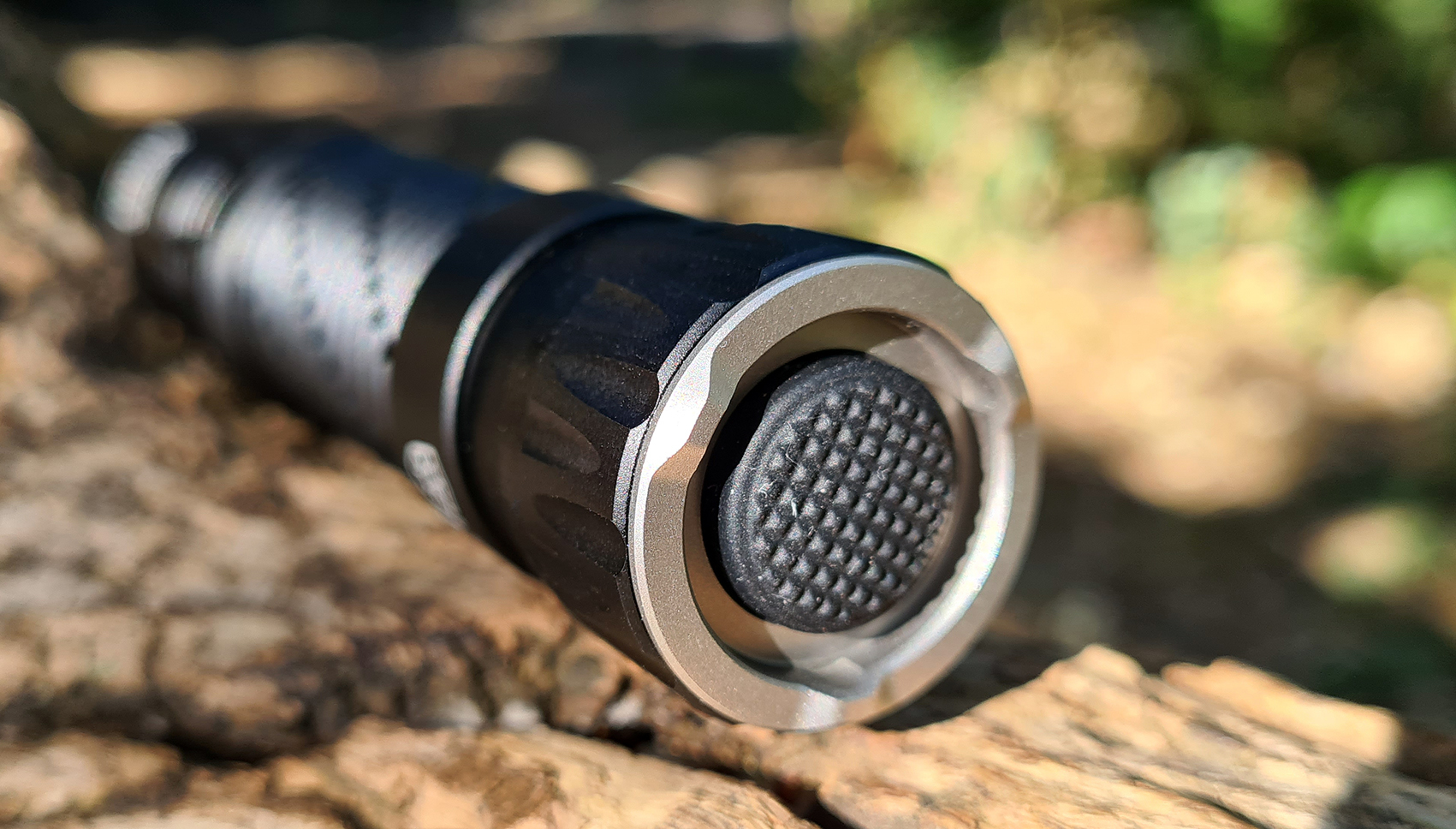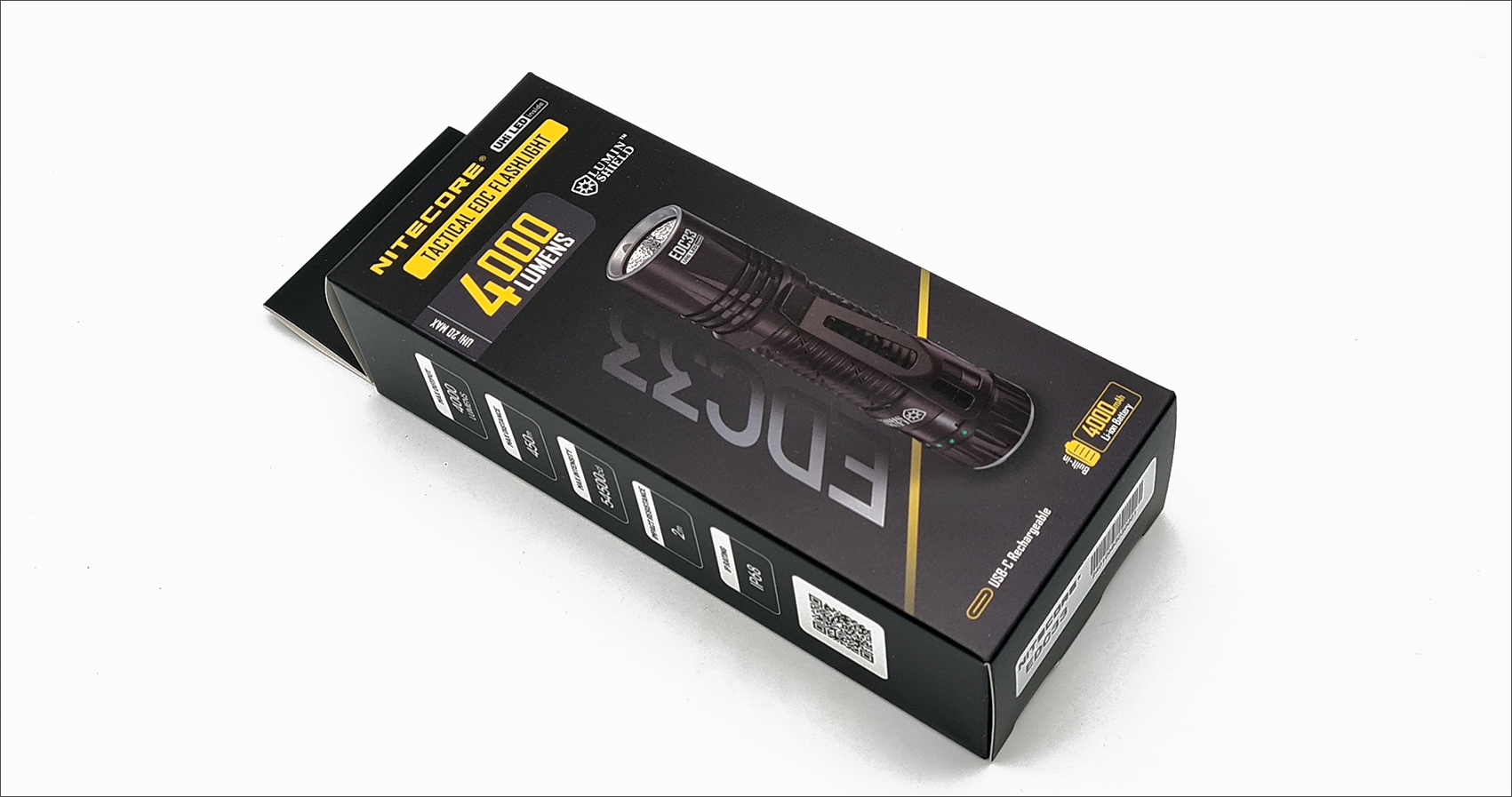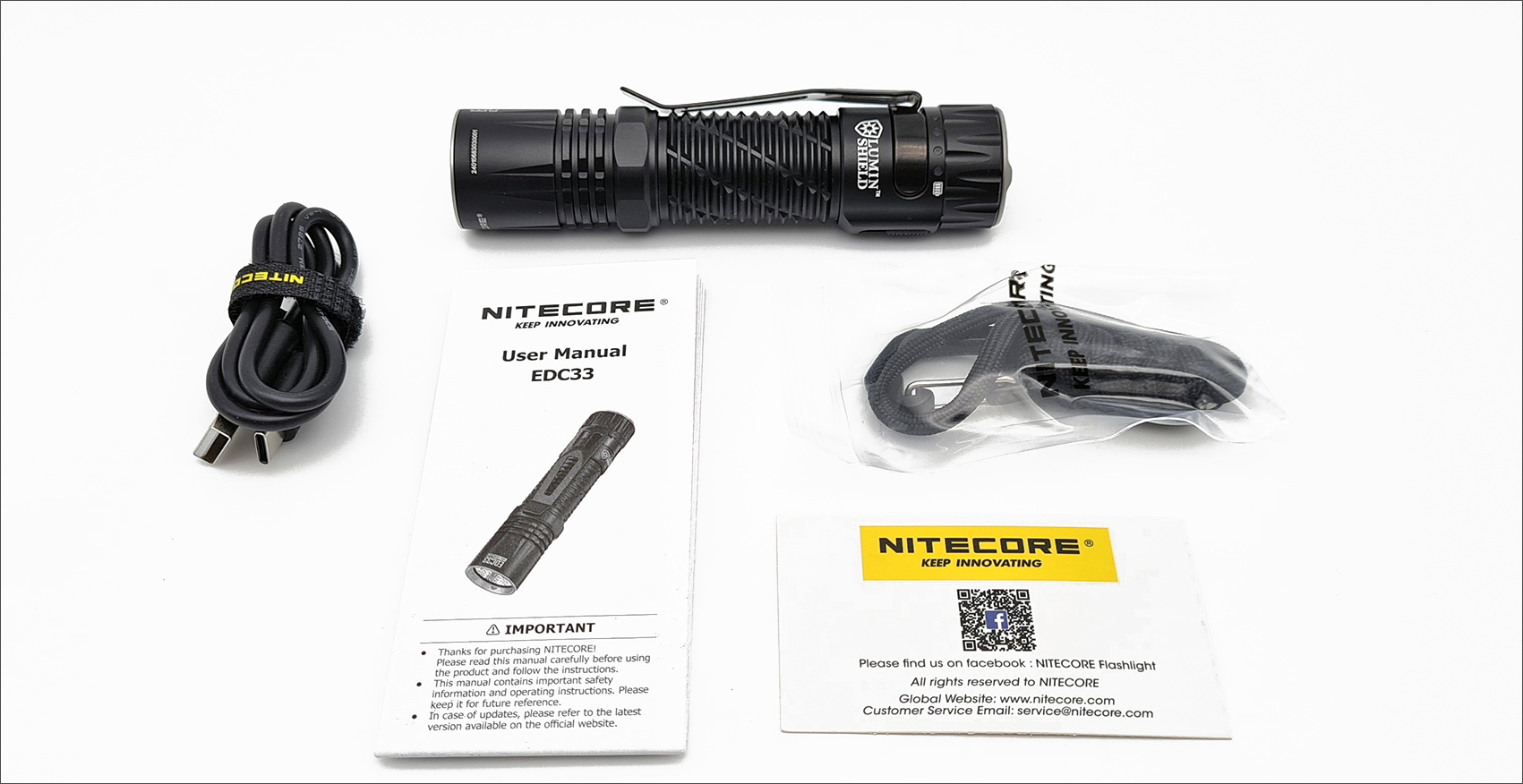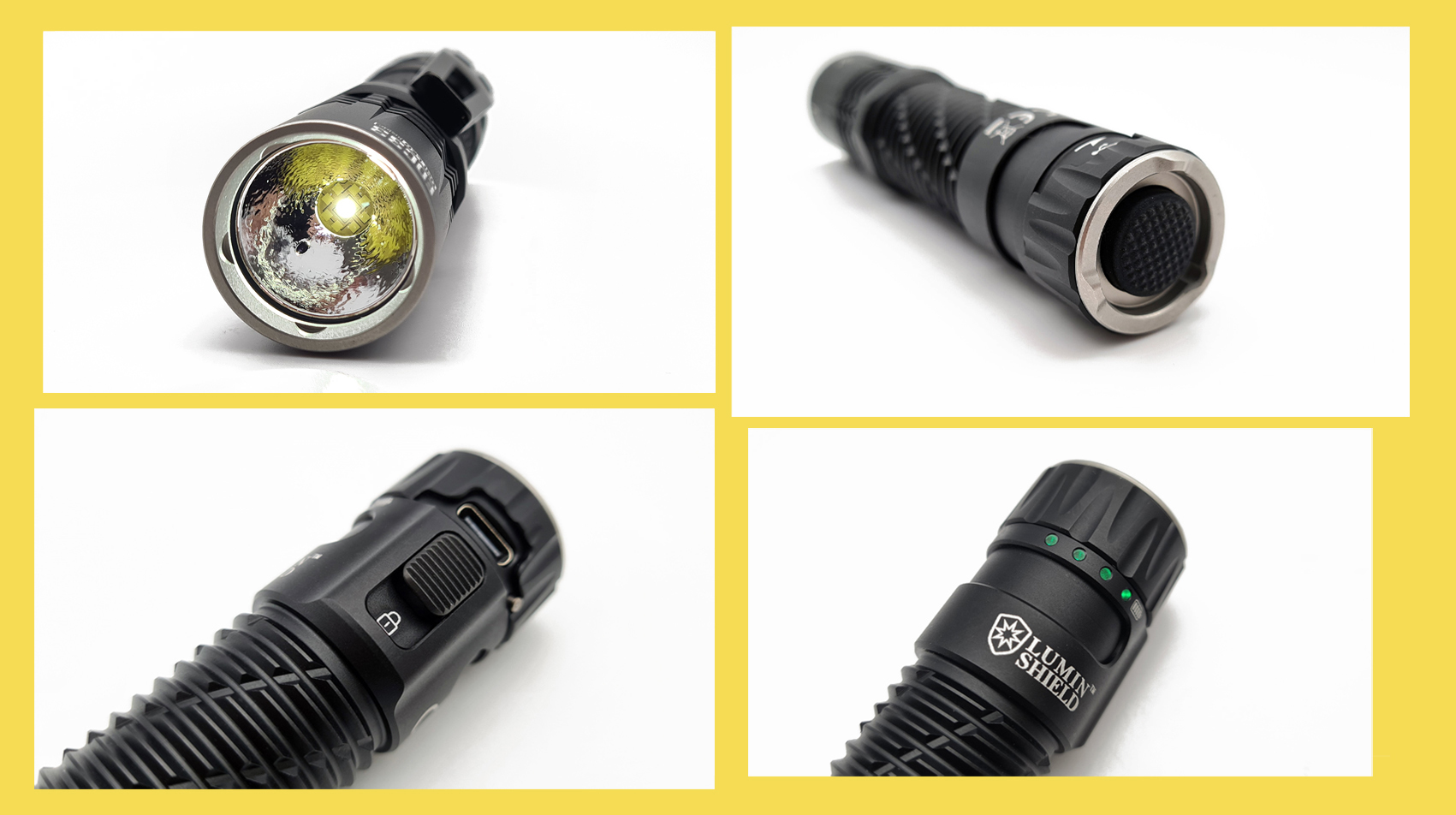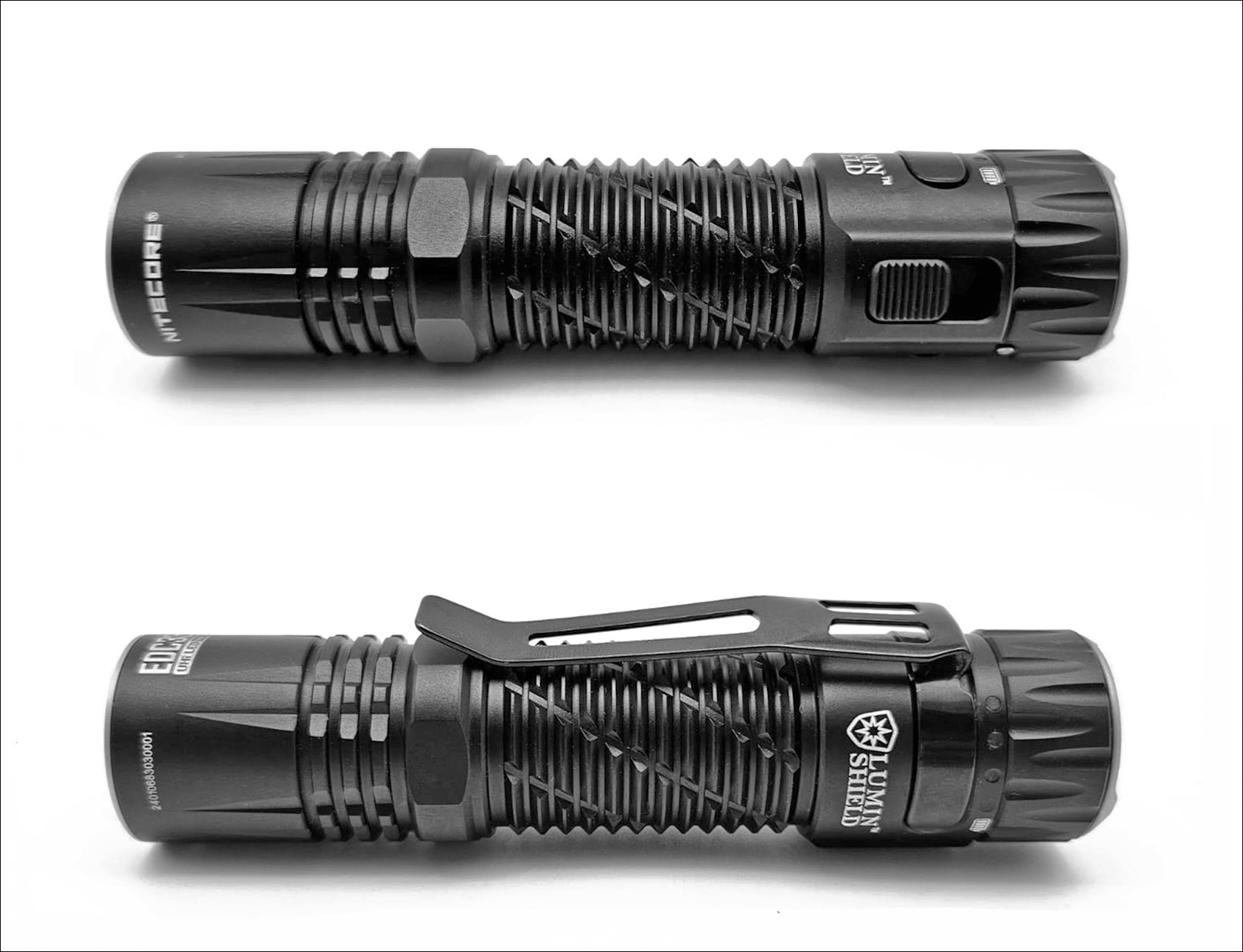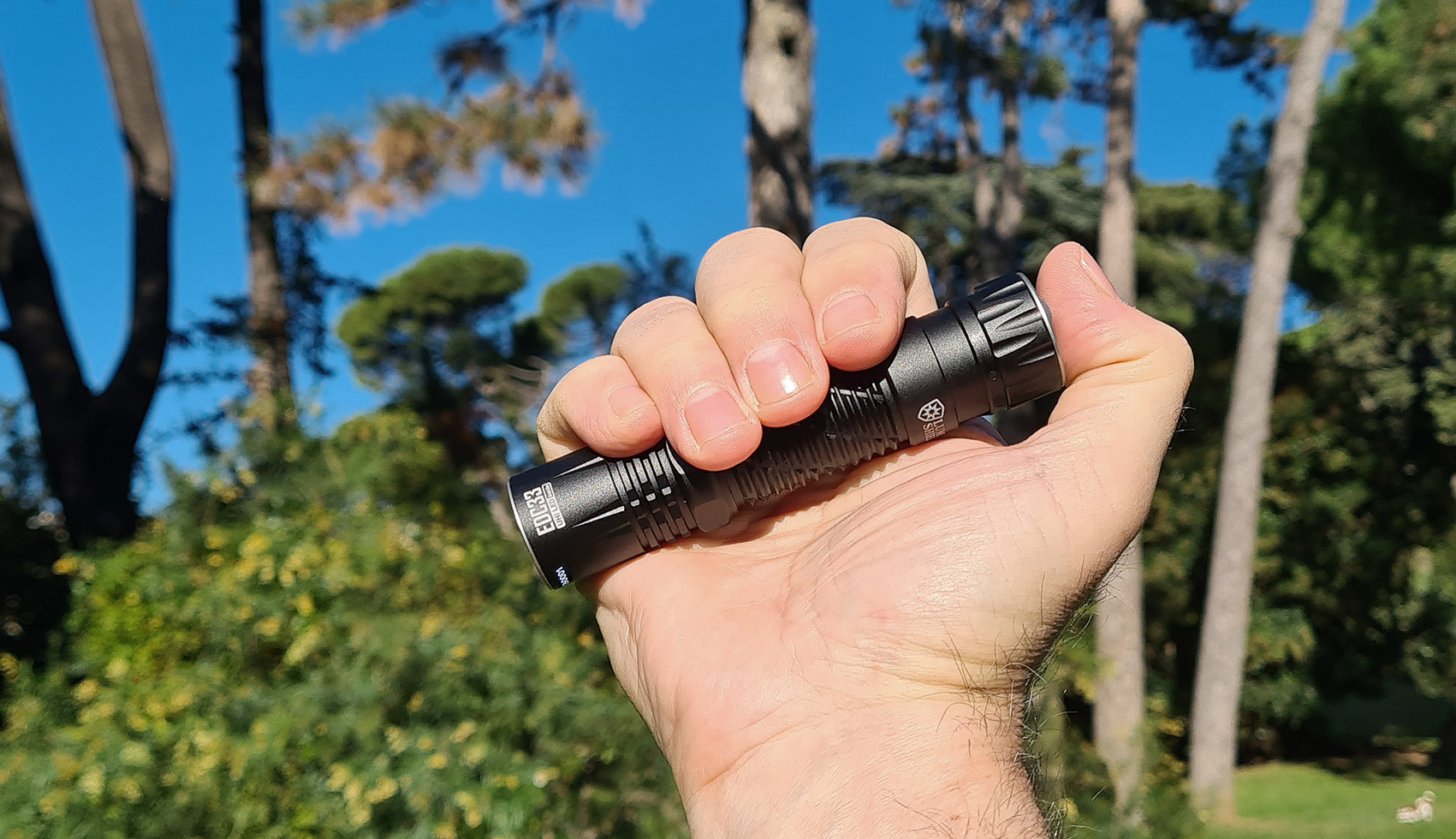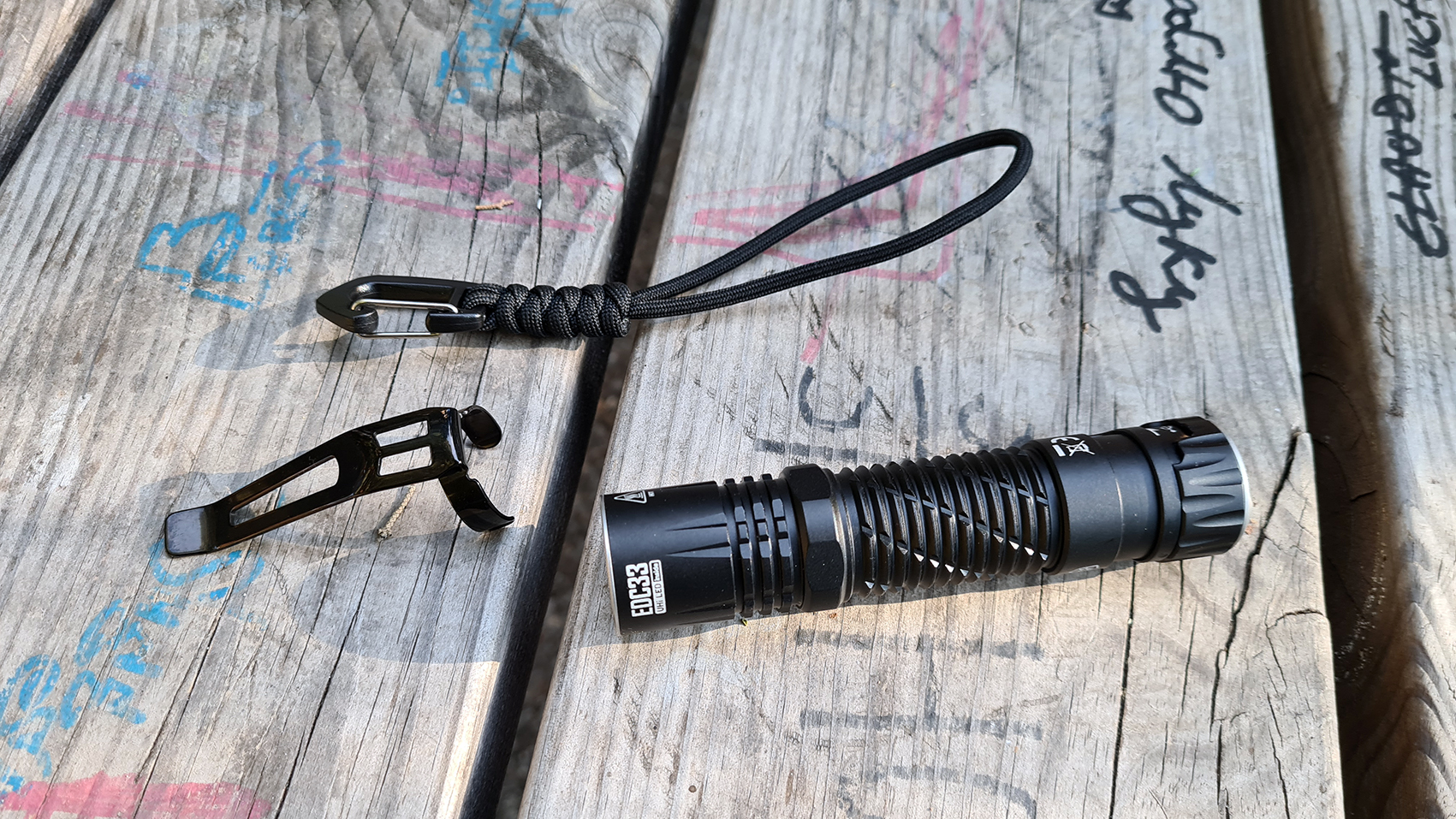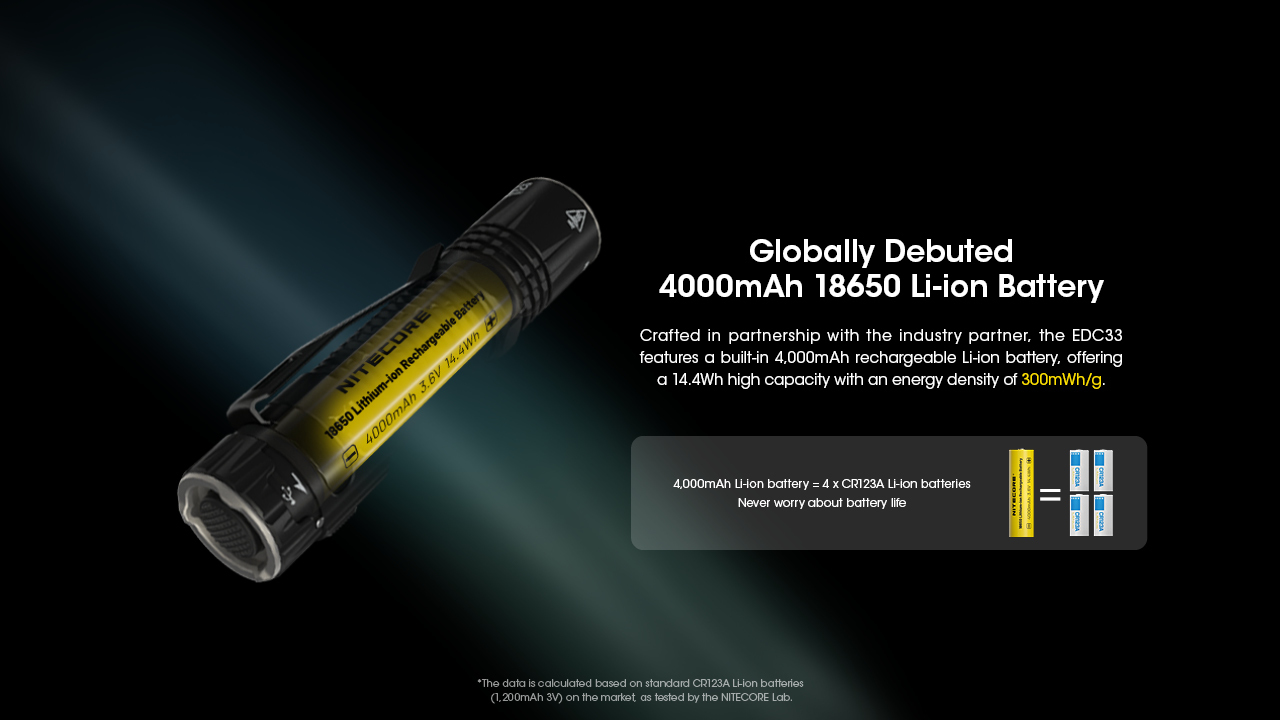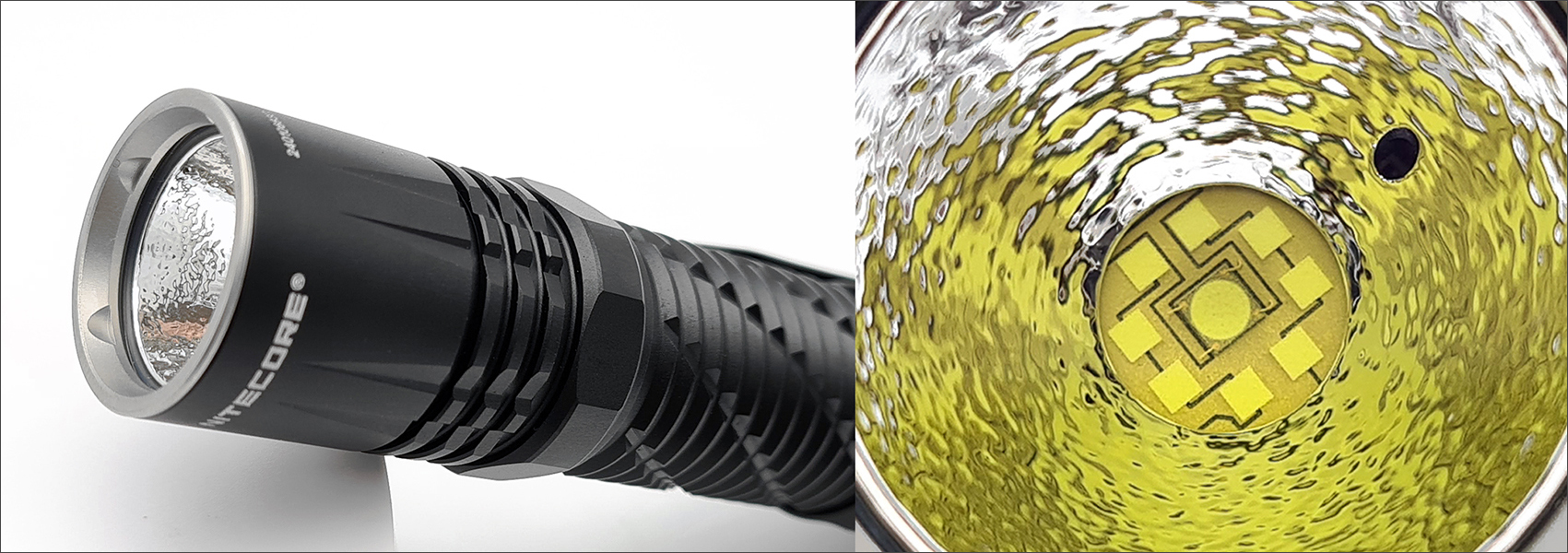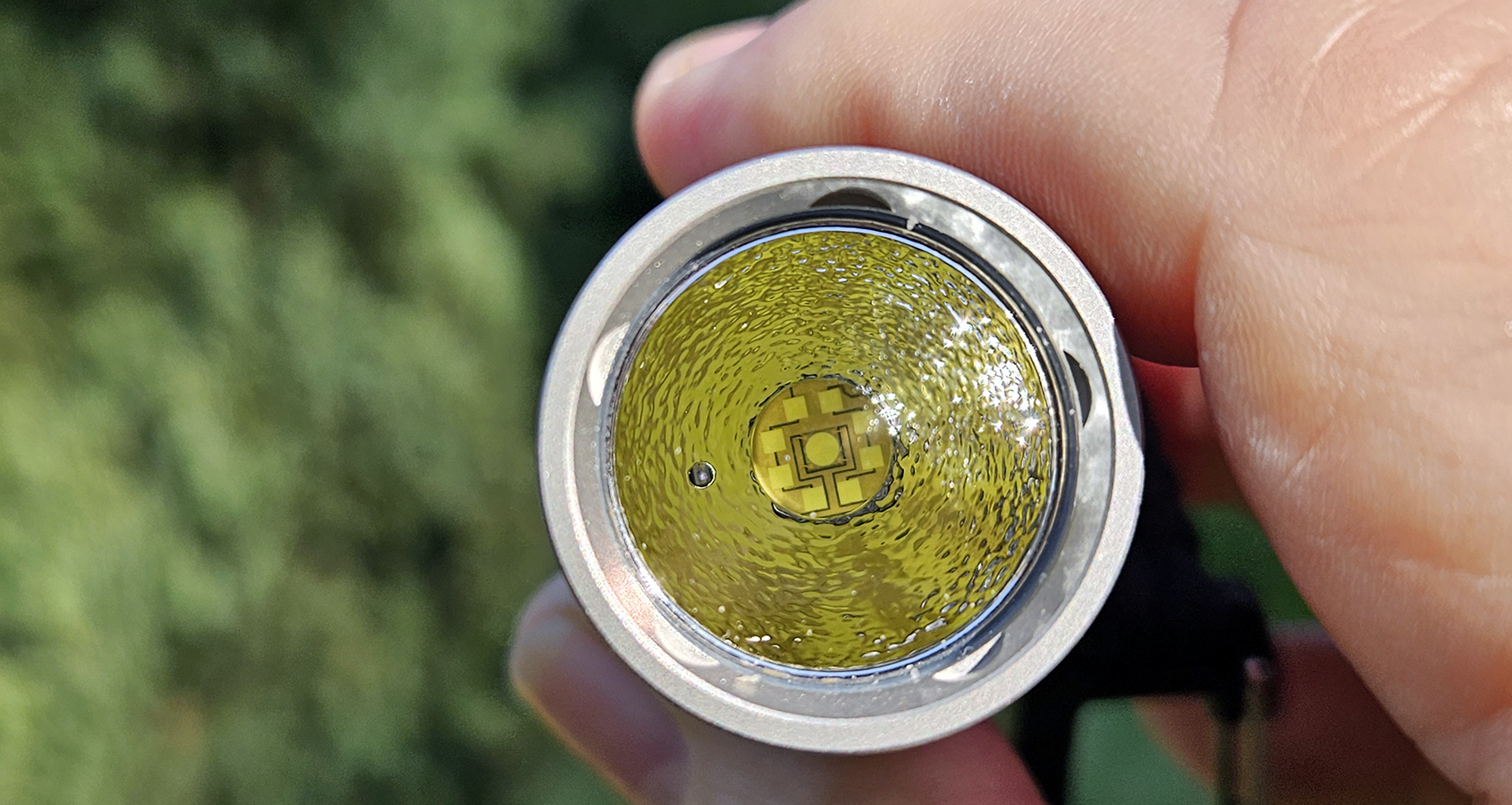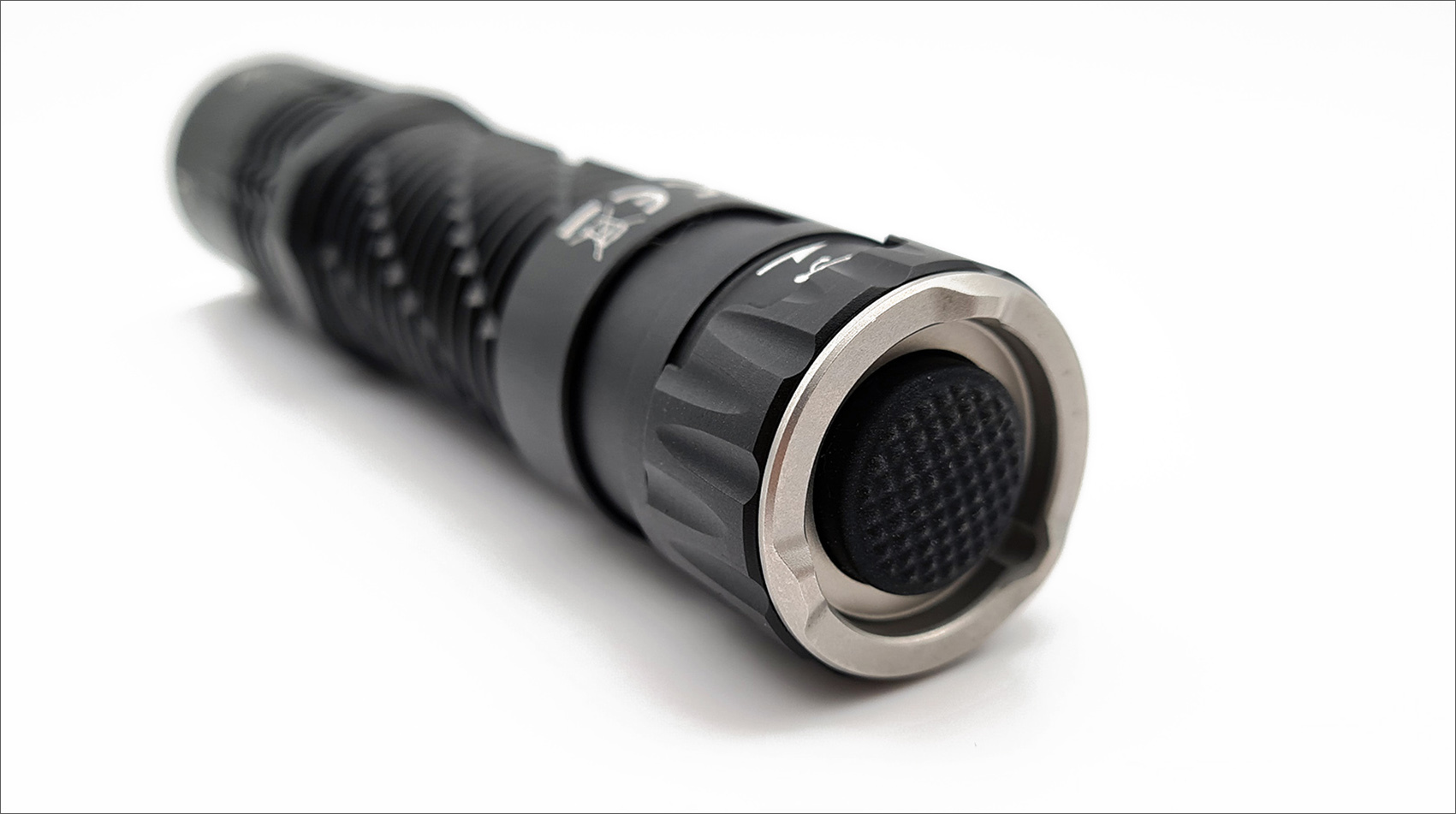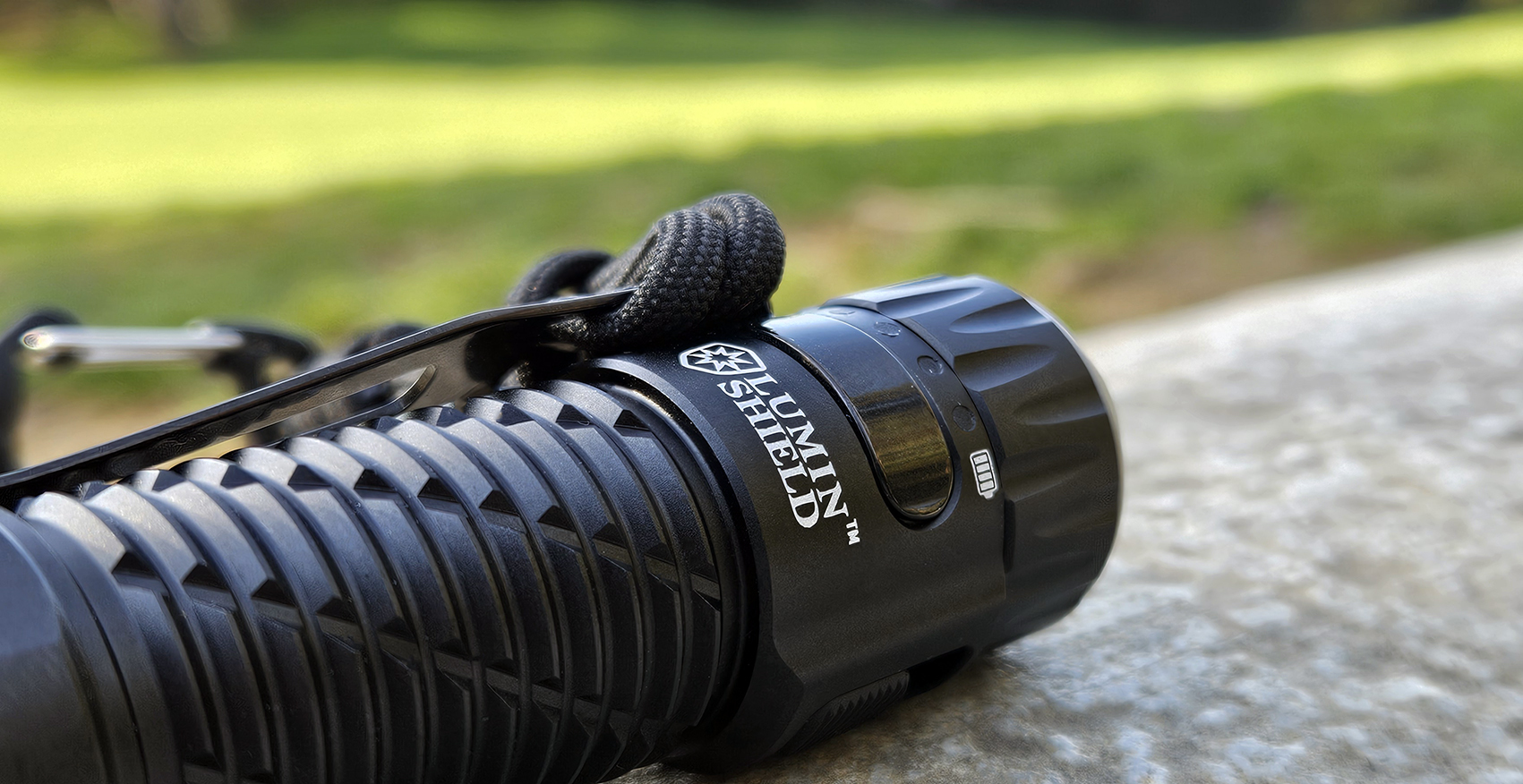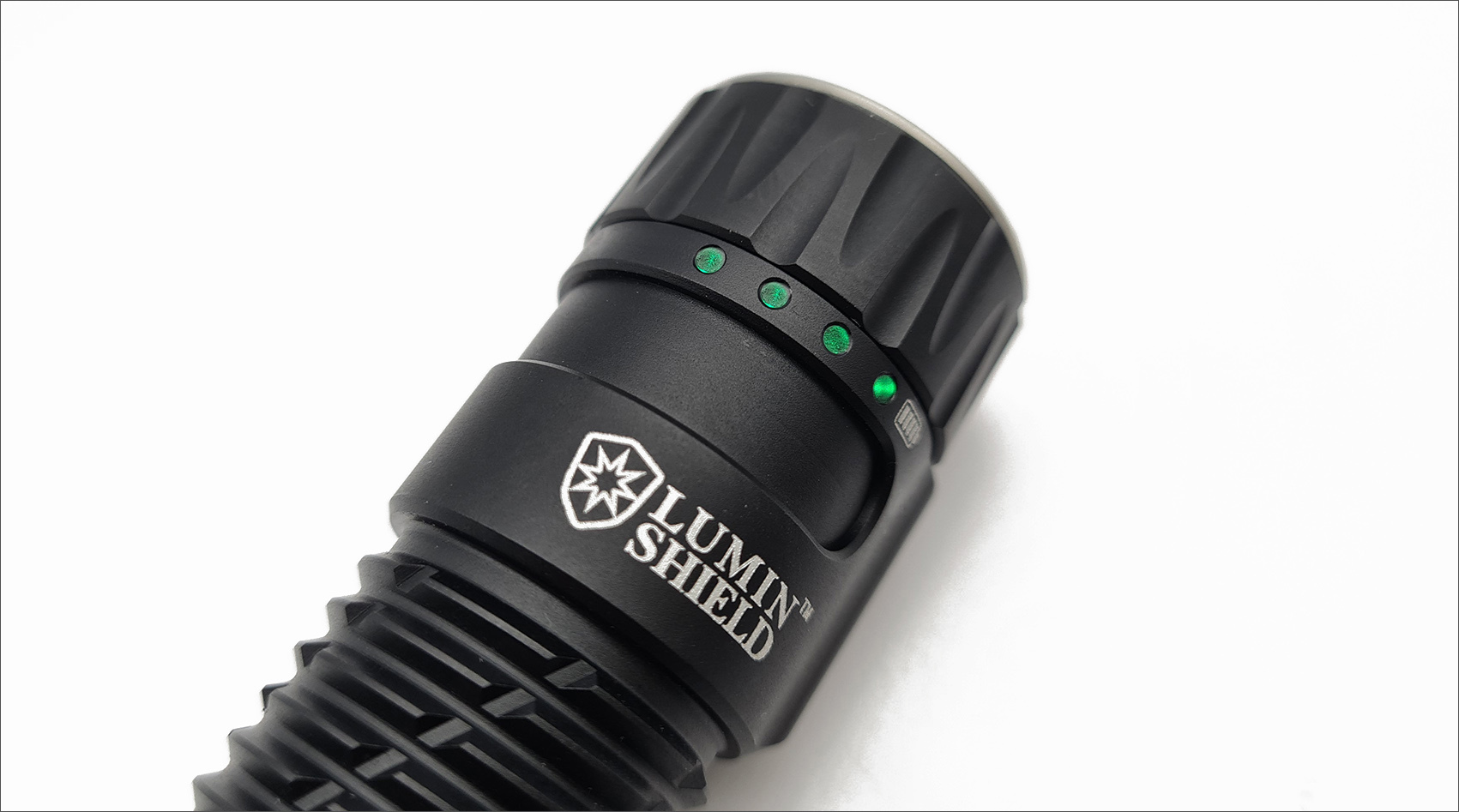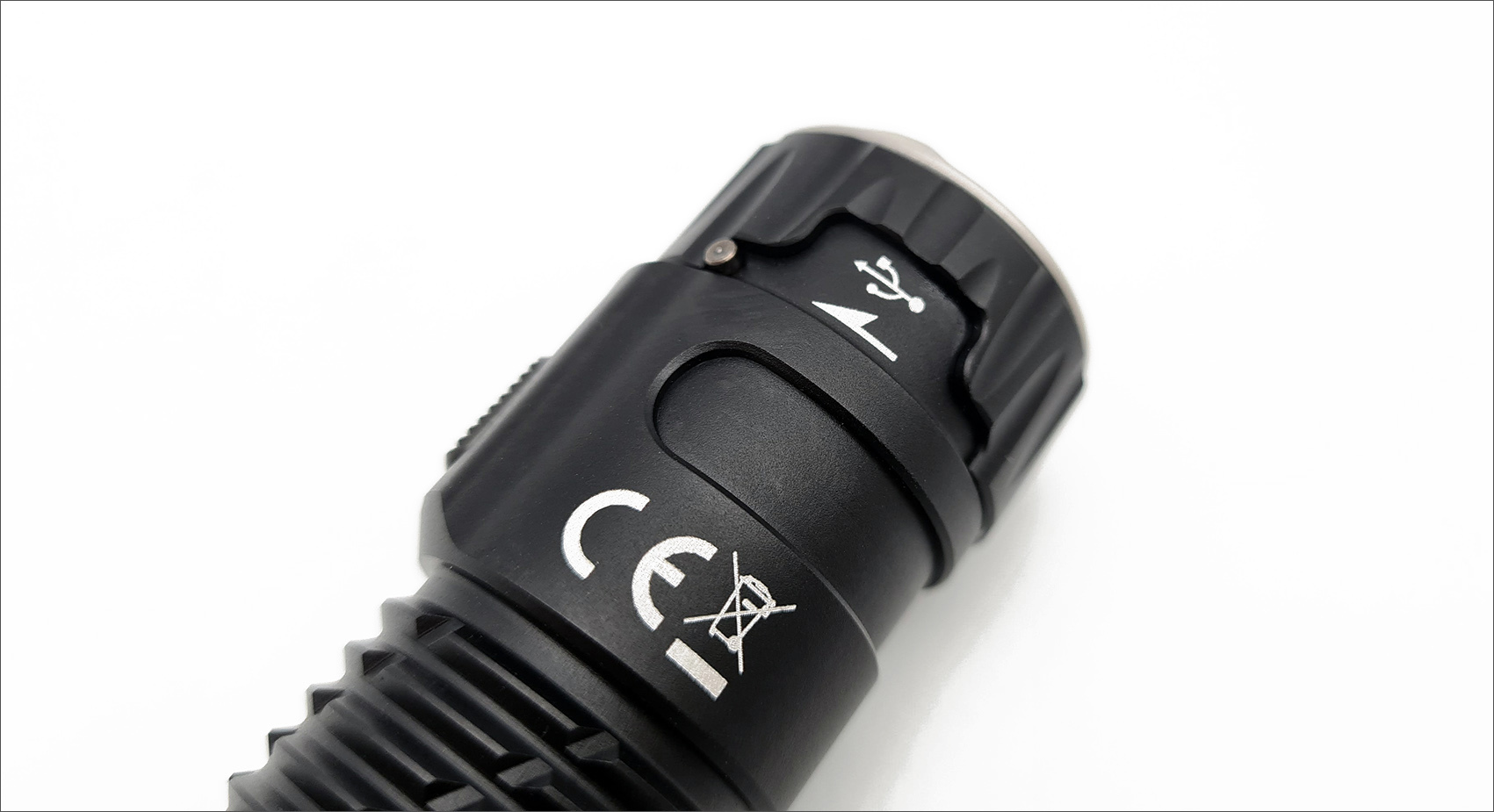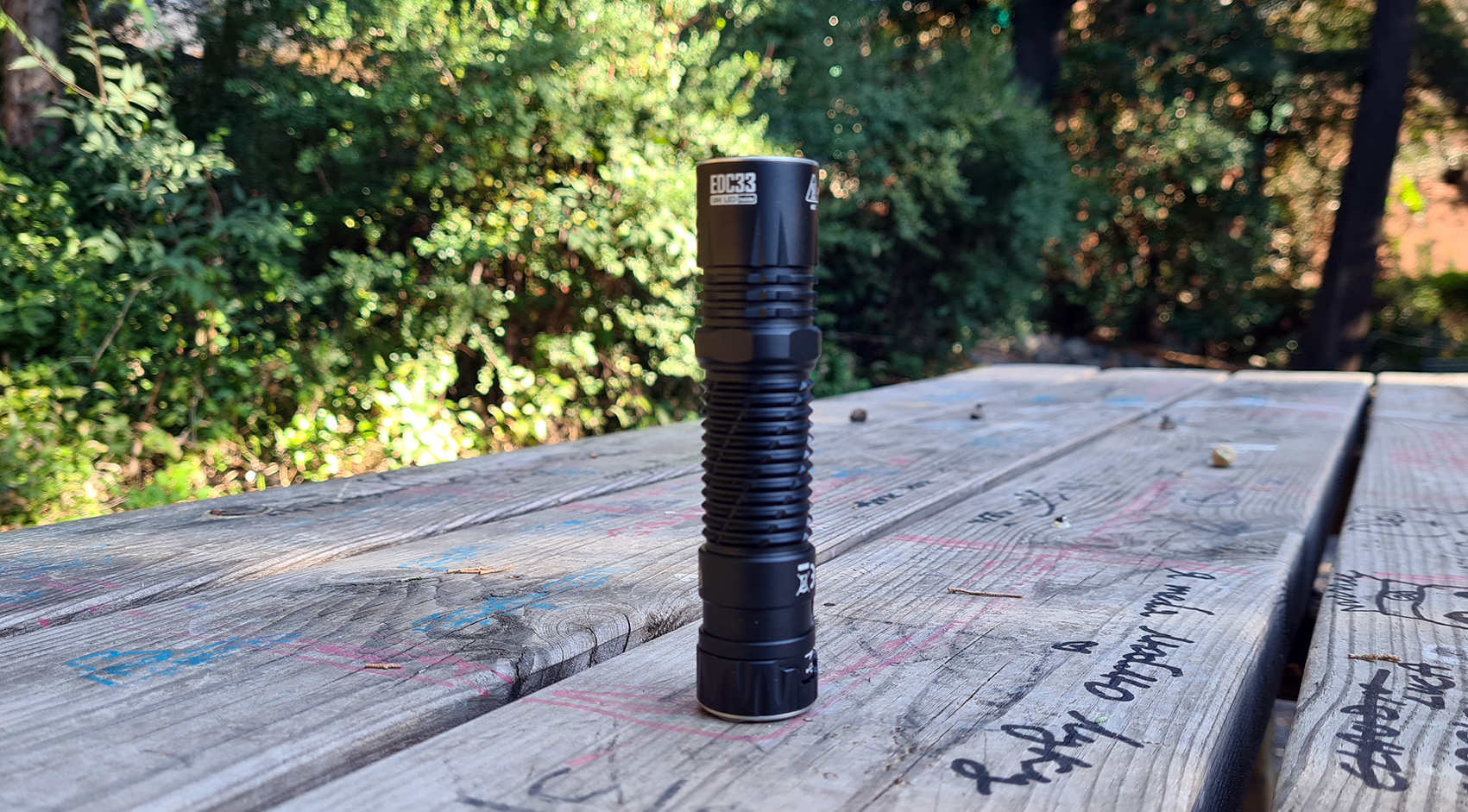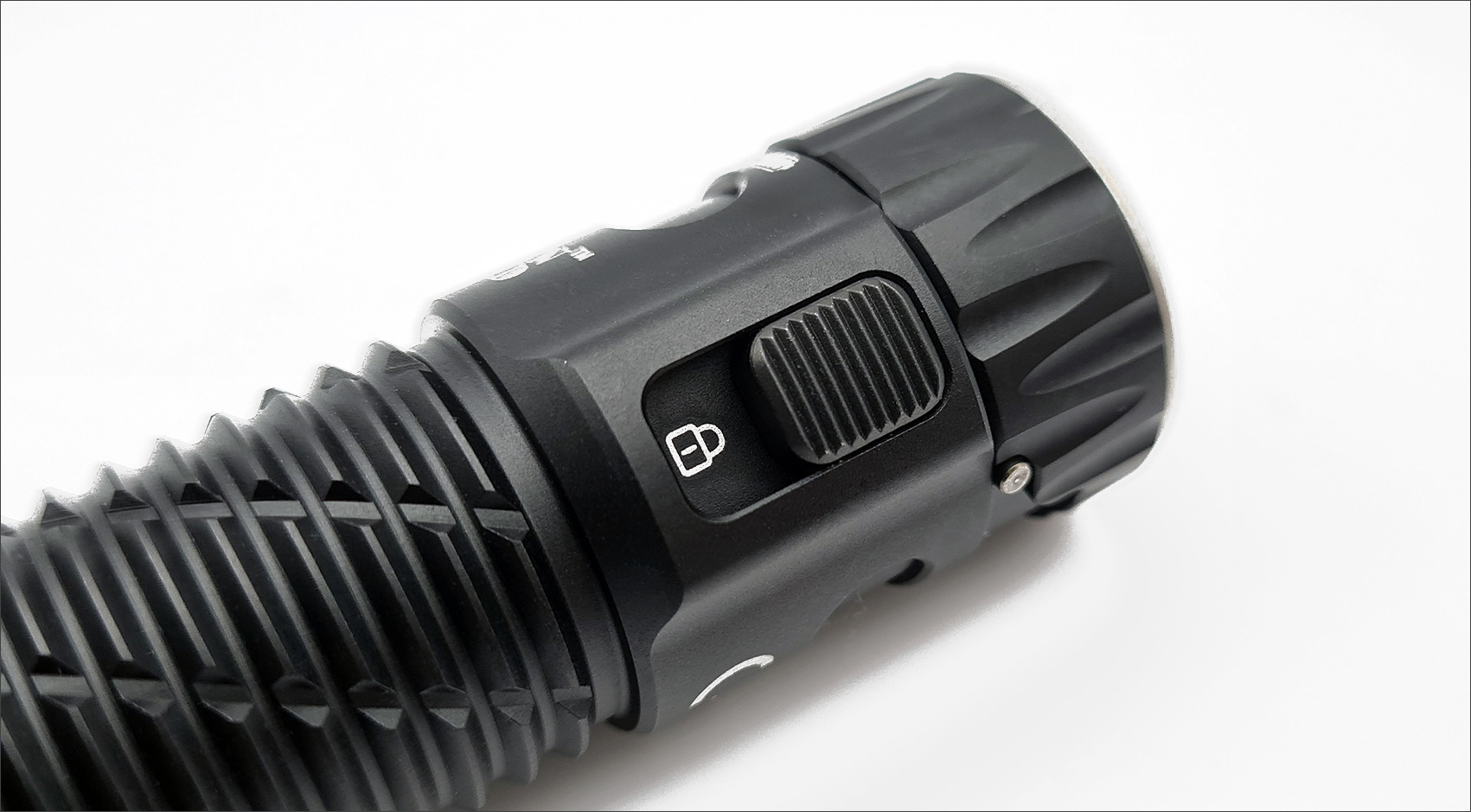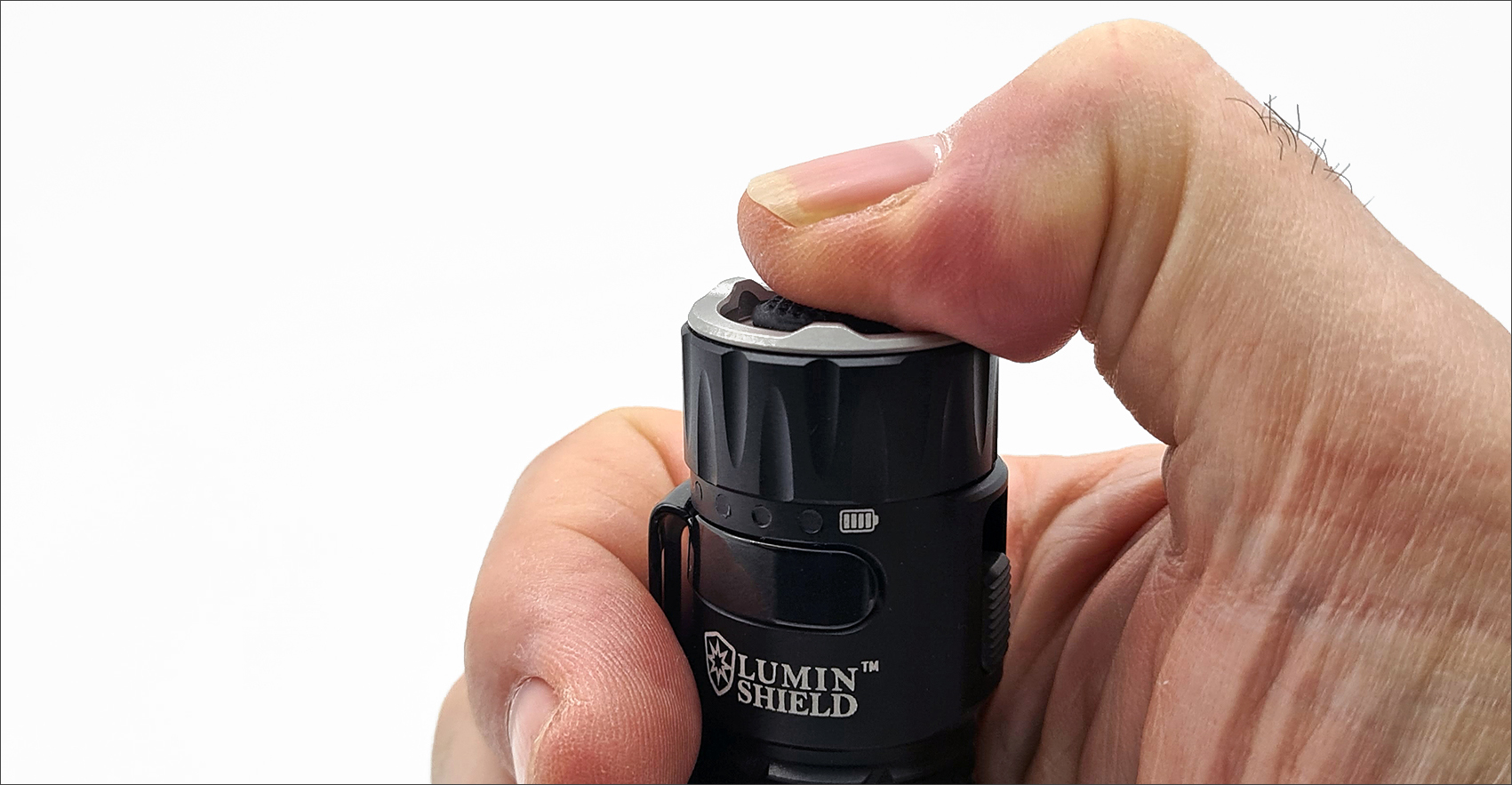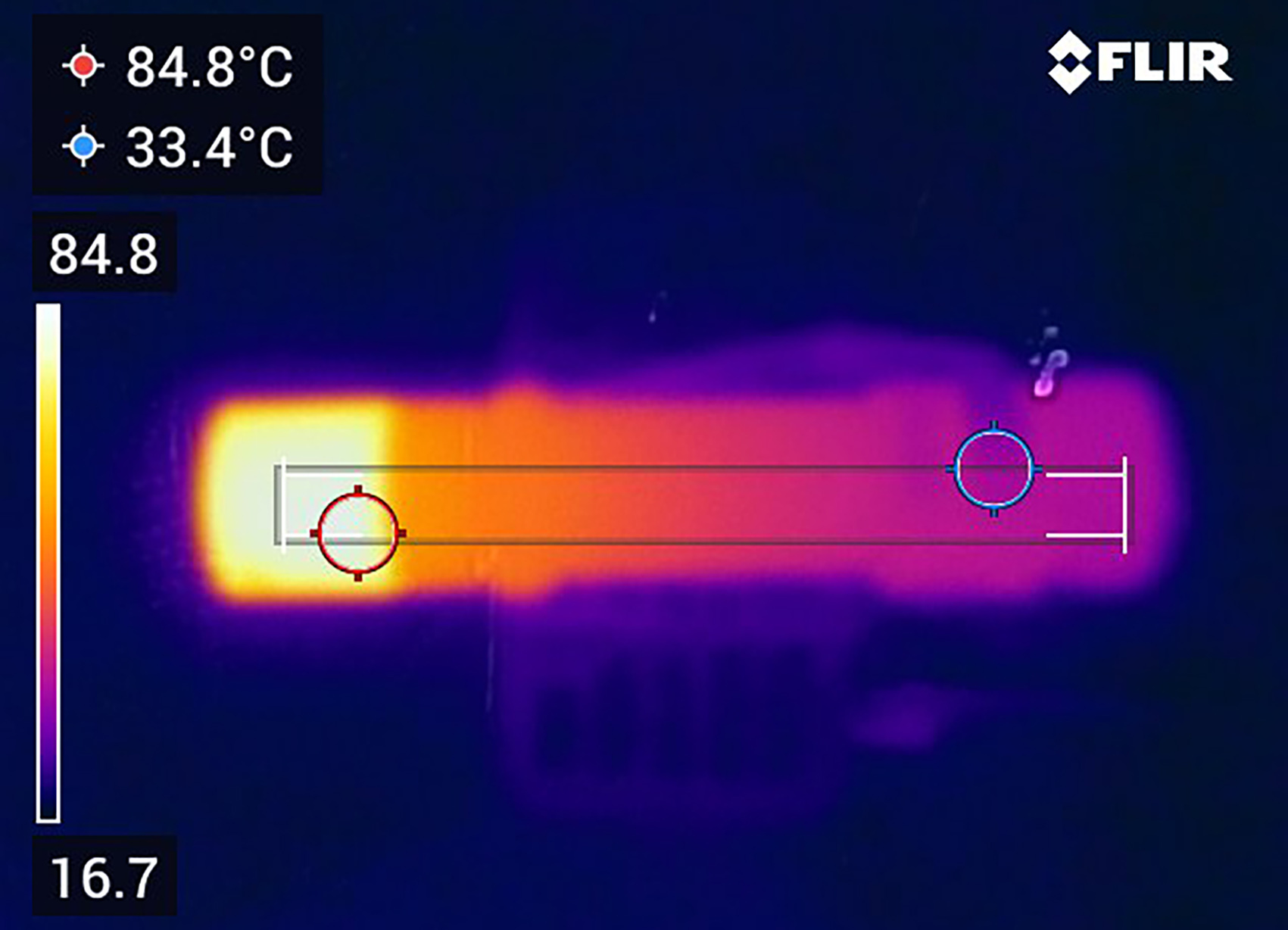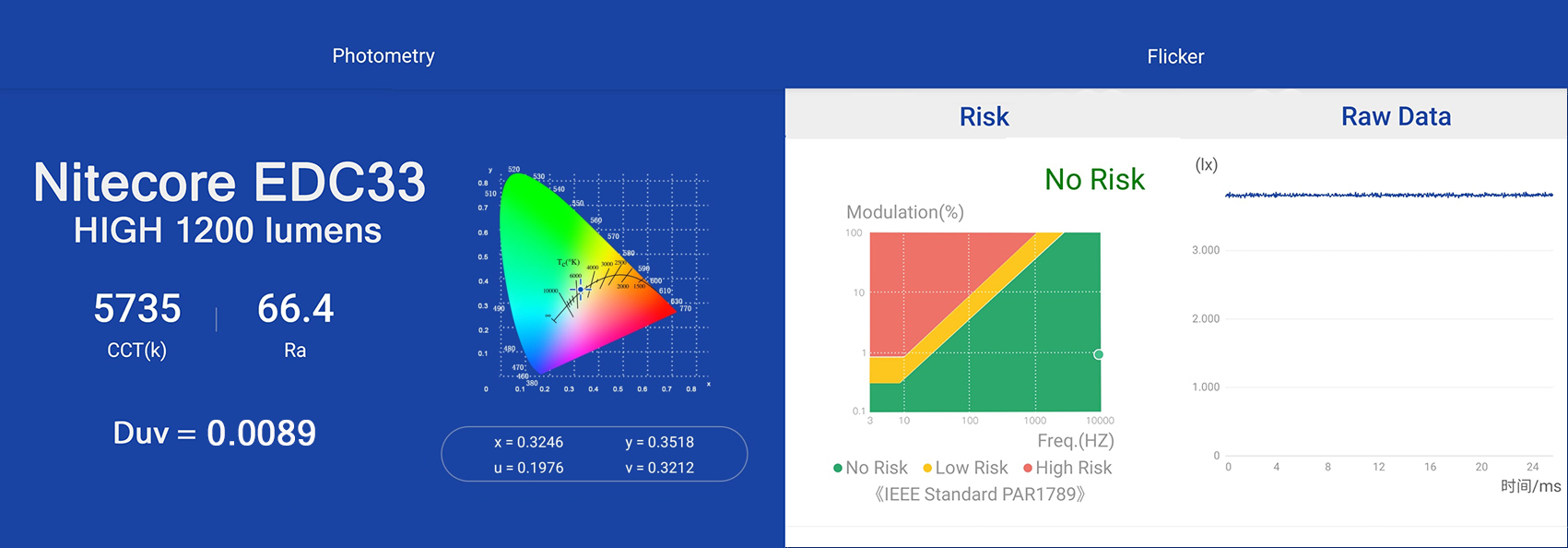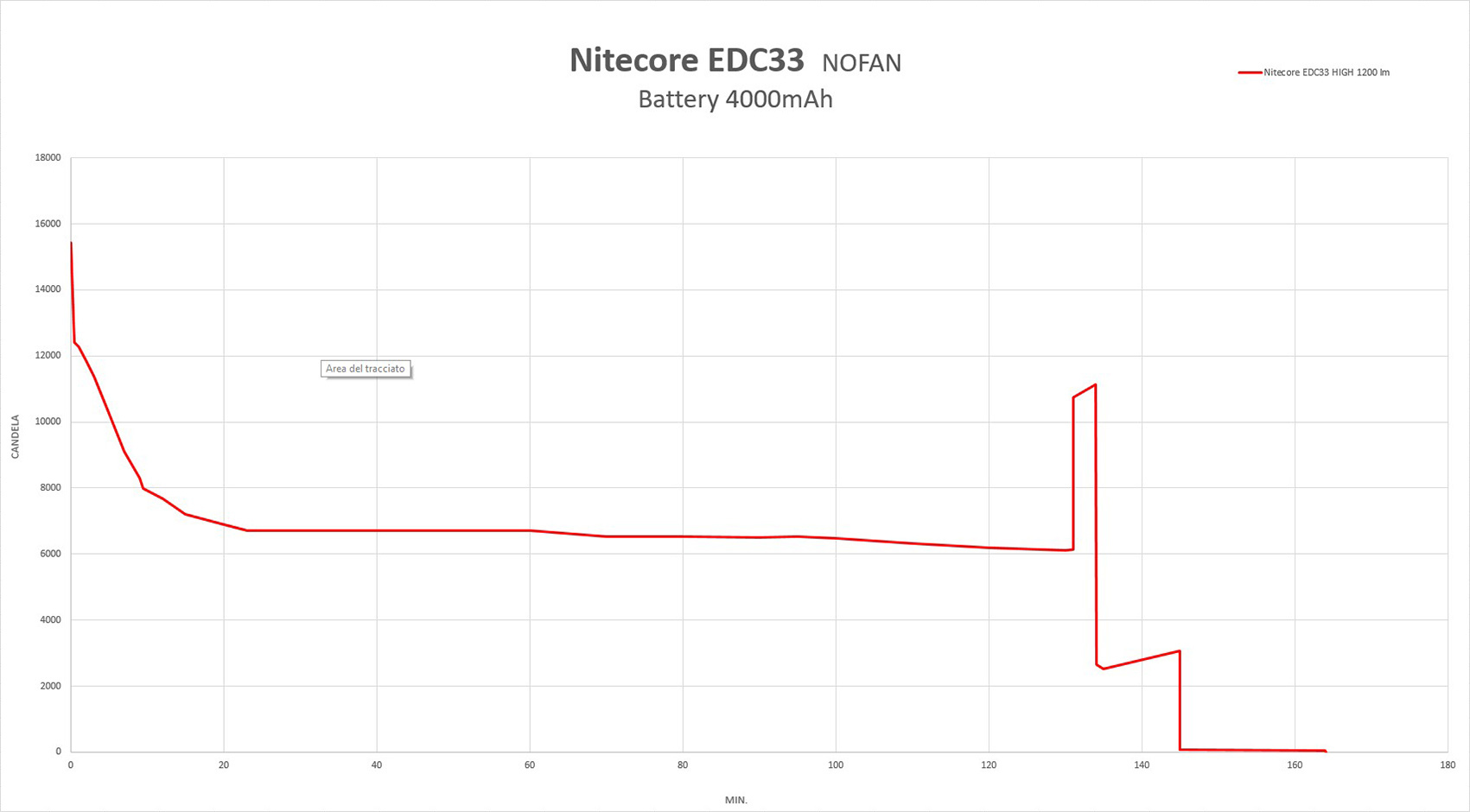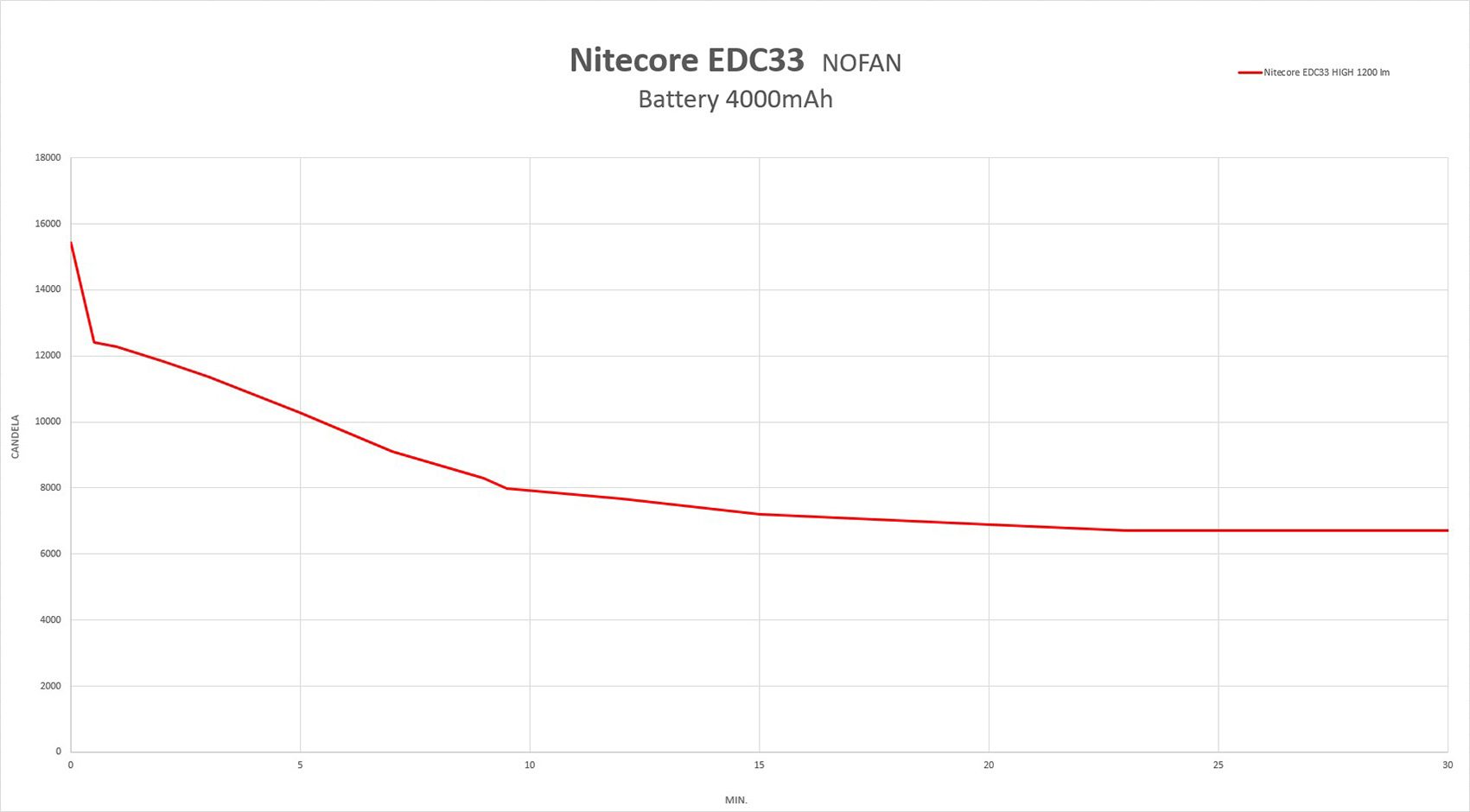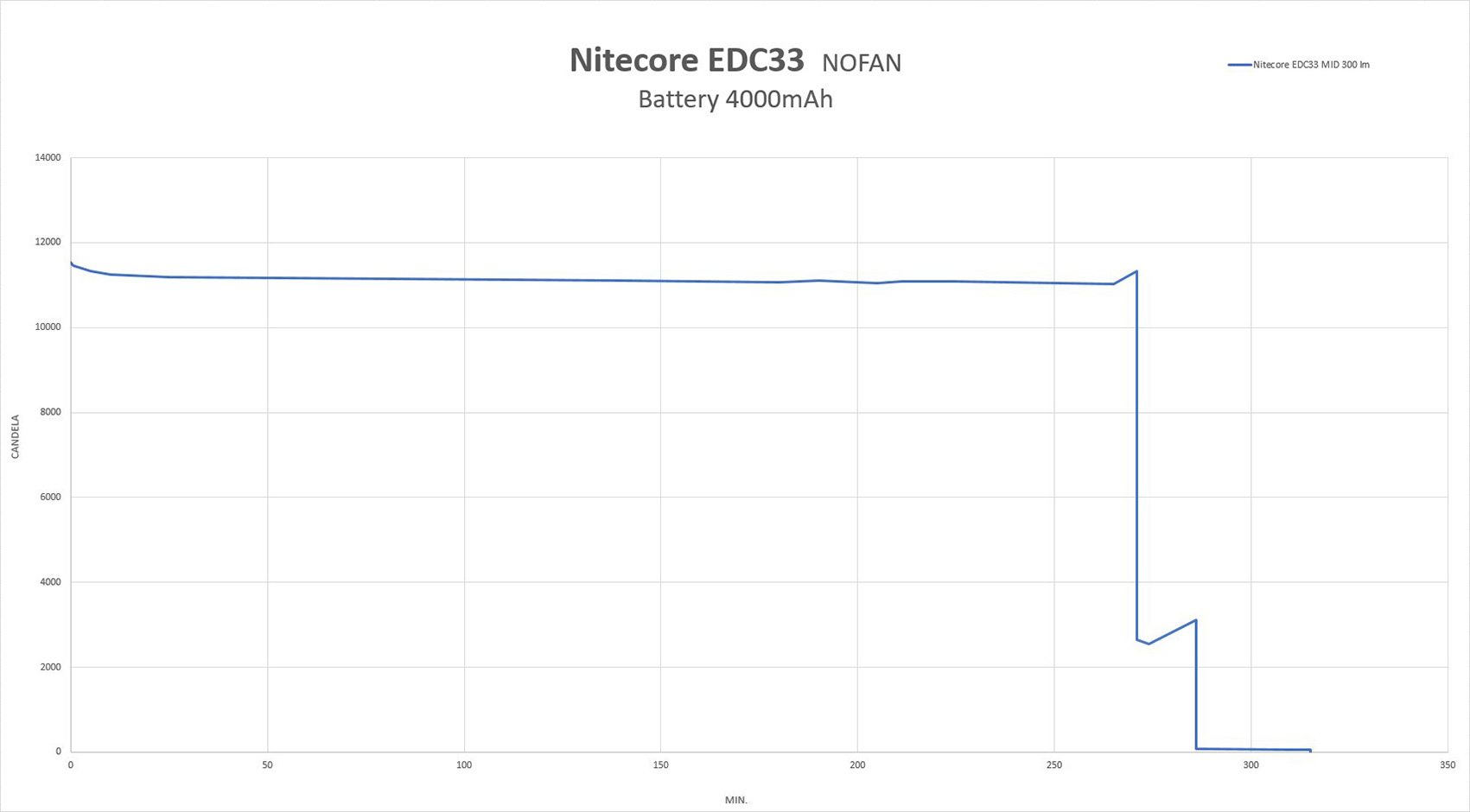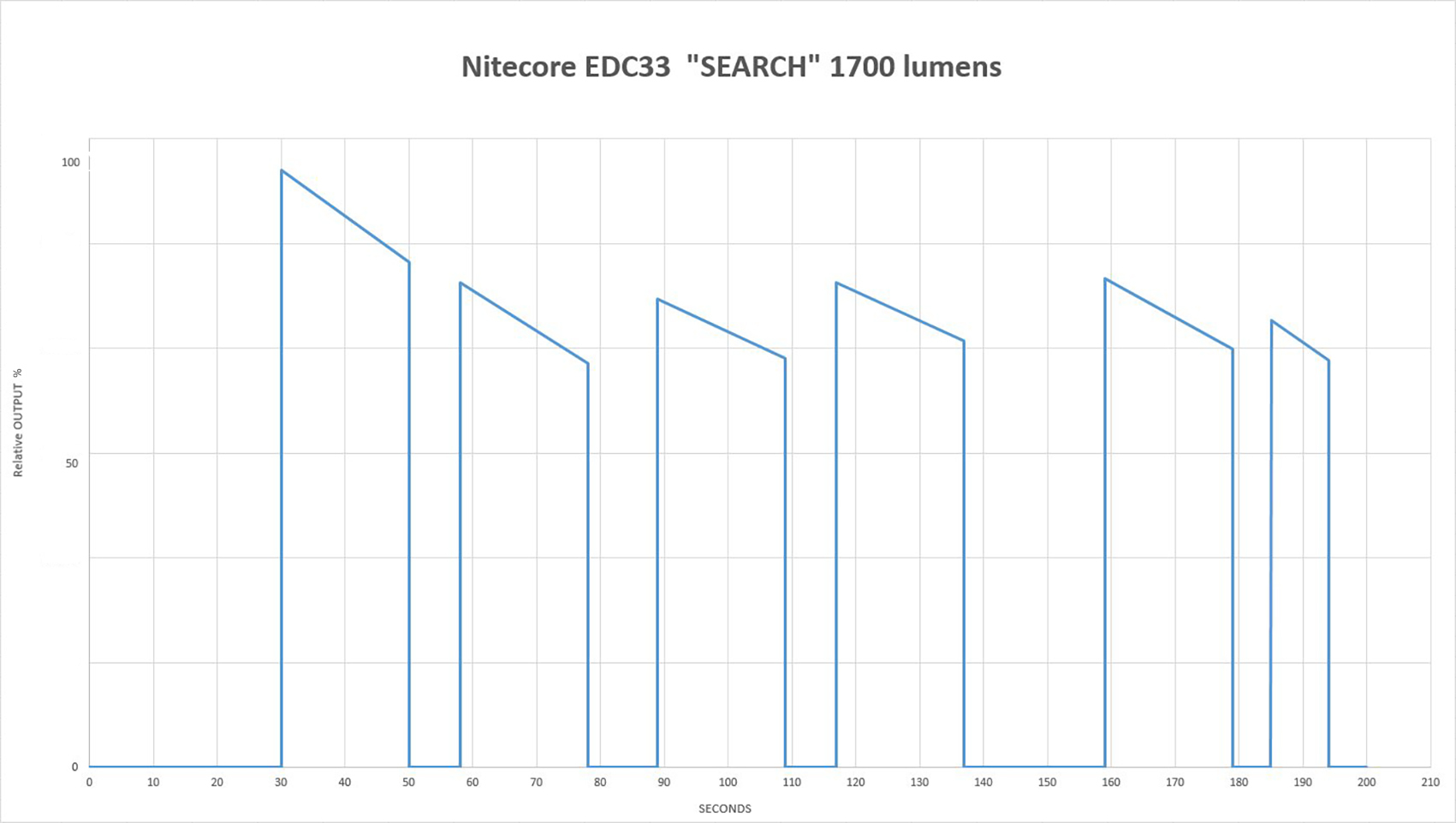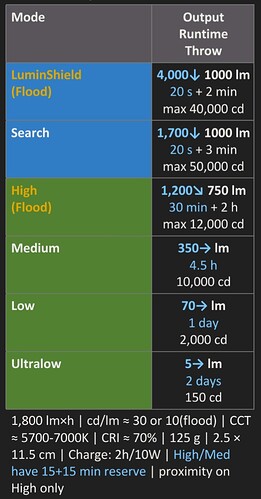Nitecore EDC33 was sent to me directly by NITECORE for review.
For technical details and to purchase the torch:
https://www.nitecorestore.com/EDC33-Rec … -edc33.htm
https://www.nitecore-italia.com/torce.html
Nitecore has launched on the market, in collaboration with NiteLab, a new series of innovative EDC torches which have, as their main feature, the use of a new type of LED. Nitecore EDC33 is the first of its kind to use the new Uhi 20 MAX LED.
The LED UHi 20 MAX represents a unit made with an integrated multi-core design that combines a small but high-intensity main core with 8 auxiliary cores arranged together in a single LED.
This solution offers high light density and ultra-long throw allowing you to seamlessly switch between spot and diffuse lighting modes with just one click.
A light press activates the (Search) tactical search mode while a firm press activates the LUMIN SHIELD mode for high light intensity.
EDC33 brings with it many important innovations.
EDC33 carries inside it, for the first time, a High Capacity 18650 lithium battery with a capacity of 4000mAh. With this battery the maximum autonomy is 63 hours (Ultralow 5 lumens).
Another novelty is the Rapid Lock which allows the partial or total blocking of the torch quickly and intuitively.
Nitecore EDC33 is compact (115.6 mm) and lightweight (127g clip included), and has a single switch in the queue to manage 4 brightness levels (HIGH, MID, LOW and ULTRALOW) beyond the momentary SEARCH (Spotlight) and LUMIN SHIELD (Floodlight) levels.
EDC33 has a maximum output of 4000 lumens and a maximum peak beam intensity of 54,500cd with a maximum throw of 450 meters.
EDC33 is IP68 certified (2 meters submersible) and has impact resistance up to 2 meters.
Its compact size and features make it an ideal companion for signaling, locating and night emergency assistance, for night walking, night fishing, camping and more.

Note: Note: The data shown is measured using the built-in lithium-ion battery (4,000 mAh) under laboratory conditions. Data may vary in actual use due to different environmental conditions.
Main features:
• Uses a 9-core UHi 20 MAX LED with a maximum output of 4,000 lumens
• Maximum peak beam intensity of 54,500 cd and maximum range of 450 meters
• 4 brightness levels to scroll through; SEARCH and LUMIN SHIELD™ available
• Powered by a built-in 4,000 mAh lithium-ion battery for up to 63 hours of battery life
• Lock switch available for partial lock mode and full lock mode
• The power indicators indicate the remaining battery charge
• Intelligent lithium-ion battery charging circuit with USB-C charging port
• Advanced Power Cut-Off (APC) technology for extremely low standby power consumption
• Highly efficient constant current circuit provides stable output
• Built-in Advanced Temperature Regulation (ATR) module (Patent No. ZL201510534543.6)
• Optical lenses with anti-scratch coating on both sides
• Constructed of military grade 7075-T6 aluminum alloy
• HA III military grade hard anodized finish
• Possibility of queue support
• Waterproof and dustproof rating according to IP68 (2 meters submersible)
• Impact resistant up to 2 meters
Specifications
Length: 115.6mm (4.55")
Head Diameter: 25.4mm (1.00")
Tube Diameter: 24.0mm (0.94")
Weight: 121 g (4.27 oz) (clip not included)
127 g (4.48 oz) (clip included)
Warranty Service
All NITECORE products are guaranteed for quality. Any DOA/defective product can be exchanged for a replacement product through a local distributor/retailer within 15 days of purchase. Subsequently, all defective/malfunctioning NITECORE products can be repaired free of charge within 24 months from the date of purchase. Beyond 24 months, a limited warranty applies which covers the cost of labor and maintenance, but not the cost of accessories or replacement parts.
Nitecore EDC33 arrived in a cardboard box with the main features that distinguish it printed on it.
Inside the package I found: Nitecore EDC33 with Clip installed and integrated 4000 mAh 18650 lithium battery, Charging cable USB-C, Lanyard, Manual and Warranty.
Nitecore EDC33 is constructed from military grade 7000 series aluminum (7075-T6), with an increase in hardness over the standard 6000 series used previously, ensuring greater durability with a more robust construction. It is waterproof and dustproof according to IP68 (2 meters submersible) and shock resistant up to 2 meters.
EDC33 is really short with a total length of just 115.6 mm with a weight, with battery and clip, of 127g. Beautiful knurling on the torch body which reflects the design seen on the latest Nitecore products such as the MH12 Pro and the MT2A Pro. Excellent grip even with a wet torch or with gloves.
Nitecore EDC33 is made up of a single block and is managed by a single switch in the queue. The numerous writings on the torch body are well made.
Thanks to the large chromed Clip DCP (Deep Carry Pocket) it is very simple to insert it into your pocket or jeans. The DCP Clip with large hole is combined with a 550 paracord included in the sales package.
The internal battery, which cannot be removed by the user, is a Nitecore 18650 4000mAh lithium battery with a maximum autonomy of 63 hours. It’s the first time I’ve found an 18650 battery with this charging capacity in a flashlight, we hope to see them on sale soon.
Charging time in QC Mode, measured by me, is around 2 hours (2A max). When fully charged, standby time, according to Nitecore, is approximately 12 months.
On the head of the Nitecore EDC33 we find a smooth bezel and an OP parabola (orange peel) with optical lenses with anti-scratch coating on both sides. At the center we find a 9 Core LED system (UHi 20 MAX), one central and 8 lateral to provide a maximum power of 4000 lumens.
The SEARCH (Spotlight) beam covers a maximum distance of 450 meters, while the more alluvial LUMIN SHIELD beam covers a maximum distance of 400 meters.
Nitecore EDC33 has a protection sensor, located adjacent to the group of LEDs, which limits the light output to 300 lumens, if it detects an obstacle at close range, to avoid overheating or burns and prolong battery life. The sensor only works with EDC33 on the high level of 1200 lumens.
Sensor sensitivity may vary due to variations in color and material of obstructions.
Nitecore EDC33 has only one switch in the queue. The rubber button is a decent size with audible clicks.
The EDC33 tactical switch is two-stage; by lightly pressing the button but without reaching the end you have access to the first stage, and at the first click, with the activation of the momentary “SEARCH” (Spotlight) level while continuing to press the button all the way we get access to the second stage, with click, activating the momentary “LUMIN SHIELD” (Floodlight) level.
The first few times I found it difficult to turn on the EDC33 without activating one of the two momentary levels. To turn on the EDC33 you need to quickly press the switch all the way down.
I hope that in the future Nitecore will be able to equip this “MAX” series with double switches for more functional interface management.
Once the torch is turned on by lightly pressing the switch it is possible to cycle through the four available levels. There is no Strobe or SOS.
At the end, on the side, there are 4 status LEDs, green in colour, which indicate the charge status of the integrated battery.
When the light is on, the power indicators will light up steadily to indicate the remaining battery power, while when the light is off, simply press the rear button halfway and the power indicators will light up to indicate the remaining battery power (lockout modes excluded ).
Status of power level indicators:
4 Constantly active 75% – 100%
3 Constantly active 50% – 75%
2 Constantly on 25% – 50%
1 Constantly on 0% – 25% (Please charge the product as soon as possible)
Always at the rear and on the side there is the USB-C charging port which is not visible. To gain access to the port, to recharge the internal battery, you must rotate the USB cover on the back. On the EDC33 we find the writing and the indication of the direction to turn (arrow) to make the USB-C charging port visible and accessible.
During the charging process, the four indicators will gradually turn from flashing to solid to show the battery level.
When the battery is fully charged, the EDC33 will stop the charging process and the power indicators will remain constantly lit.
The lighting function is available during the charging process (excluding LUMIN SHIELD™ and SEARCH).
In the EDC33 there is a practical lock selector (Rapid Lock) for partial lock mode and full lock mode. With this system it is possible to prevent the accidental activation of the light during storage or everyday transport in an intuitive and fast way. I would like to see this implementation in all flashlights.
Nitecore EDC33 near other flashlights.
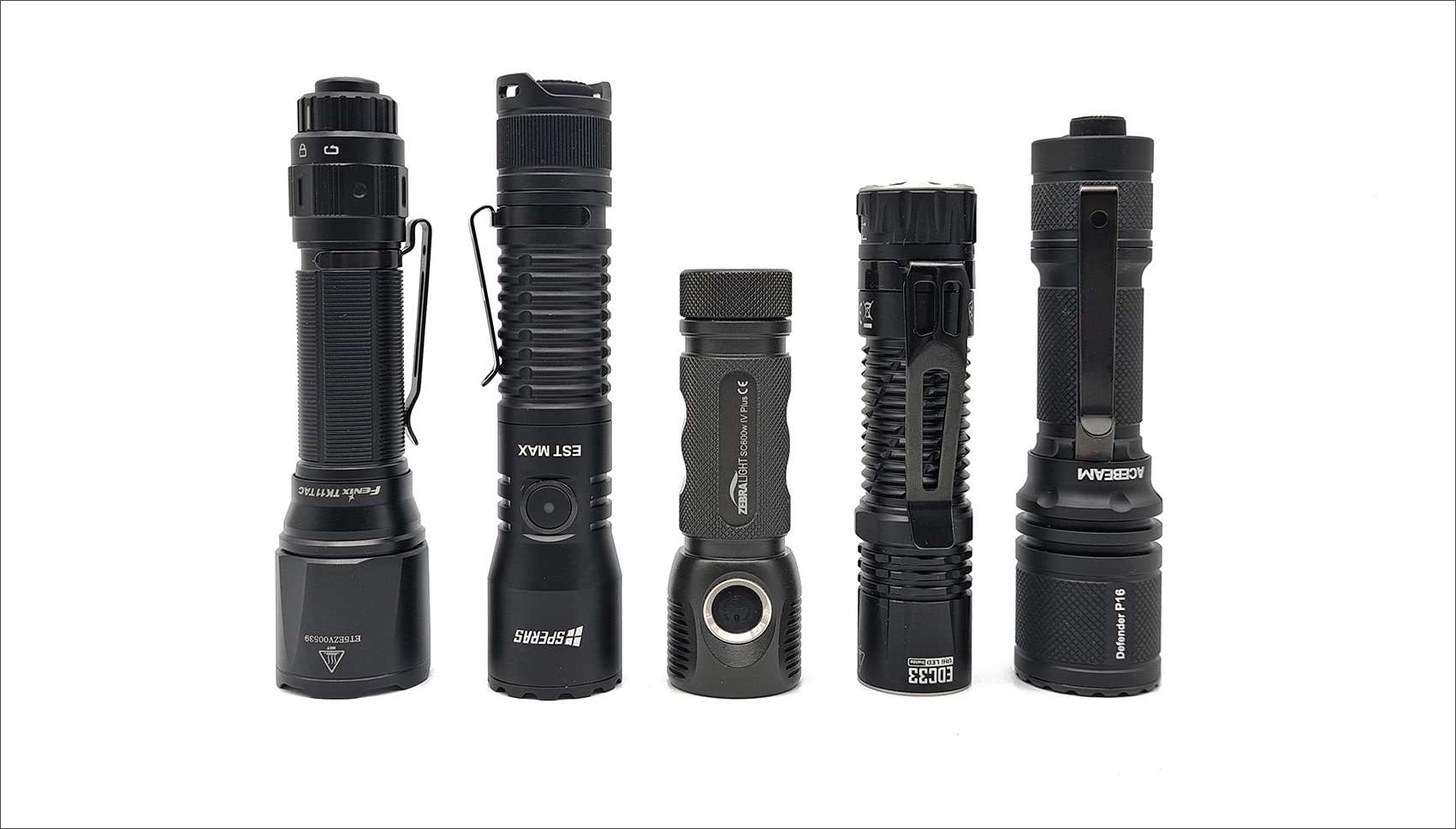
From left: Fenix TK11 TAC, SPERAS EST MAX, Zebralight SC600w IV Plus, Nitecore EDC33 and Acebeam P16.
USER INTERFACE (UI)
The user interface of the Nitecore EDC33 is simple. EDC33 has 4 levels of brightness beyond the momentary LUMIN SHIELD (Floodlight) and SEARCH (Spotlight) levels.
LUMIN SHIELD 4000 lumens,
SEARCH 1700 lumens,
High 1200 lumens, 2 hours and 31 minutes
Average 300 lumens, 6 hours and 58 minutes
Low 70 lumens, 31 hours
Ultralow 5 lumens, 63 hours
Momentary tactical lighting
· Half-press and hold the queue button to access SEARCH. Release to turn it off.
· Press and hold the Rear Button fully to access LUMIN SHIELD™. Release to turn it off.
On off
· Turn on: When the light is off, press the tail button all the way down to turn it on.
· Off: When the light is on, fully press the tail button to turn it off.
Brightness Levels
When the light is on, half-press the tail button to cycle through the following brightness levels: ULTRALOW – LOW – MID – HIGH. The flashlight will directly access the previously stored brightness level when reactivated.
Lock/Unlock
The EDC33 has two locking modes (partial locking mode and full locking mode).
Half block mode:
· When the light is on, slide the lock switch up while holding the rear button halfway or fully to enter partial lock mode. The lock icon is visible under the lock switch.
· In Half Lock mode, half-press and hold the back button to access SEARCH; Fully press and hold the tail button to access LUMIN SHIELD™.
Note: To enter full lock mode, first slide the lock switch down to unlock the flashlight, then turn on the flashlight and then slide the lock switch up. The light will exit partial lock mode and directly enter full lock mode.
Full Lock Mode (default)
When the light is on/off, slide the lock switch up to enter full lock mode. The lock icon can be seen below the lock switch, indicating that the rear button is unavailable to activate the flashlight.
To unlock:
In both lock modes, slide the lock switch down to exit lock mode.
ATR (Advanced Temperature Regulation)
Built-in ATR technology adjusts the EDC33’s output based on working conditions and the surrounding environment to maintain optimal performance.
BEAM and RUNTIME
Nitecore EDC33, in the wall test, with the average level of 300 lumens, has a beam without obvious artifacts with a very bright hotspot and a color crown tending towards yellow-green.
The UltraLow, Low, Medium and momentary SEARCH levels use only the center LED while the High and LUMIN SHIELD levels use all nine available LEDs.
In the evening test, in the dark, I really appreciated the brightness offered by this LED system that the flashlight has even if using EDC33 in the most powerful modes the heat emitted soon reaches very high values, in particular using the LUMIN level SHIELD with 4000 lumens. The photo below was taken with a thermal imager after some ignitions done with this level.
LUMIN SHIELD has the particularity of creating a high intensity of light, particularly useful as self-defense, taking advantage of the new 9-core technology of the Uhi 20 MAX LED. I think this is the main function studied by Nitecore for this new technology.
Nitecore EDC33 has a powerful beam in the two momentary levels SEARCH of 1700 lumens and LUMIN SHIELD of 4000 lumens, but the duration is short. The SEARCH level, which uses only the central LED, has more throw than that obtained from all nine LEDs of the LUMIN SHIELD.
The average brightness of 300 lumens allows you to walk safely with a good close-up overview. The values in candela (lux/1 meter), found by me with measurement at 5 meters, correspond to or are higher than those declared by NITECORE.
No PWM visible to the naked eye.
With the OPPLE Light Master Pro I measured the value of the CCT color temperature and the Ra color rendering. Here are some measurements:
In SEARCH (1700 lumens) the measured CCT value is 6641 while the Ra is 71.6 Duv = 0.0041
In LUMIN SHIELD (4000 lumens) the measured CCT value is 7377 while the Ra is 75.7 Duv = 0.0026
In HIGH (1200 lumens) the measured CCT value is 5735 while the Ra is 66.4 Duv = 0.0089
N.B. The LUMIN SHIELD level measurement was made on the side beam (not hotspot)
The Runtimes were done indoors with a temperature of around 18°C, using the internal battery, a fully charged 4000mAh 18650.
I would like to point out that the values expressed by the graphs must be evaluated above all as a reference because they were made with means and conditions different from those used in the laboratory. The measurement made with the Luxmeter reports the values in Candela (cd) and not the expressed brightness.
The runtime times measured by me, in the tests carried out, are lower than those declared in the table by Nitecore.
In HIGH (1200 lumens) there is a sharp decrease in luminous flux immediately after turning on EDC33. After 30 seconds the descent is less sudden and stabilizes after about 20 minutes at about half of the initial one for almost 2 hours. At this point, after a rapid and brief increase in brightness, there is the first decrease, approaching the end of the battery. Once you reach the ultralow level, a few minutes pass before it switches off.
In MID mode (300 lumens) you immediately have constant brightness until 4 hours and 30 minutes after switching on. Here too, two stepdowns subsequently bring the brightness to the ultralow level for a few minutes.
The first 30 minutes.
MID 300 lumens:
Another test was done by activating the 1700 lumens SEARCH mode several times. The duration of each activation is approximately 20 seconds as long as the temperature (ATR module) and voltage allow it.
I subsequently tried this level for over 3 minutes without reactivating. The measurement was around 55,000cd and after 20 seconds the brightness drops to around half, in my case it was slightly over half. For the test time, over 3 minutes, the brightness remained constant. The ATR regulation system certainly intervenes here too.
Video
CONCLUSIONS:
Nitecore EDC33 is an EDC tactical flashlight that brings with it many new features in a small, compact product.
The main feature is the new LED UHi 20 MAX system, a unit made with an integrated multi-core design that combines a small but high-intensity main core with 8 auxiliary cores arranged together in a single LED. With this system, the highest level “LUMIN SHIELD”, once activated, creates a large 4000 lumen luminous wall defined by Nitecore as “similar to a shield” useful in particular for self-defense.
Nitecore EDC33 is well built with excellent materials and, for the first time, adopts a 4000mAh** 18650 lithium battery. However, as often seen in this period, the battery cannot be replaced by the user.
With the Rapid Lock we can quickly and easily secure the EDC33 while the invisible USB-C charging port is protected by a well-made rotating ring on the back. Also useful is the protection sensor located adjacent to the LED group and the beautiful and functional large clip.
In the evening test, in the dark, I appreciated the power of the beam which reaches considerable distances with good beam quality thanks also to the OP reflector. Unfortunately I encountered some difficulty in using a single switch (two-stage) to use the available levels with sometimes some jamming. The highest levels are timed and in any case with them EDC33 reaches unsustainable high temperatures if used without gloves for prolonged periods.
Thanks for reading the review.
Roberto
------ MY YOUTUBE CHANNEL ------------------------------------------------
